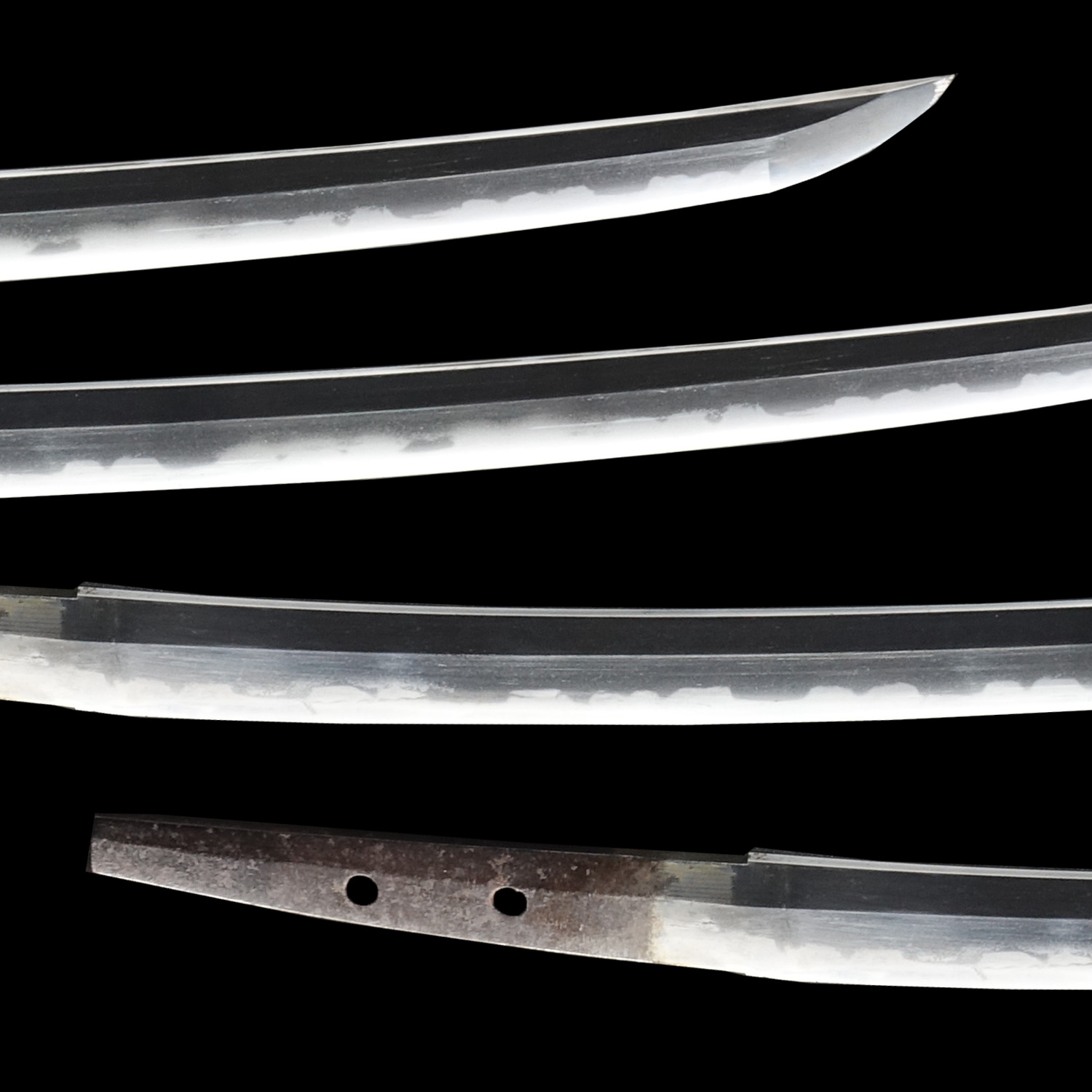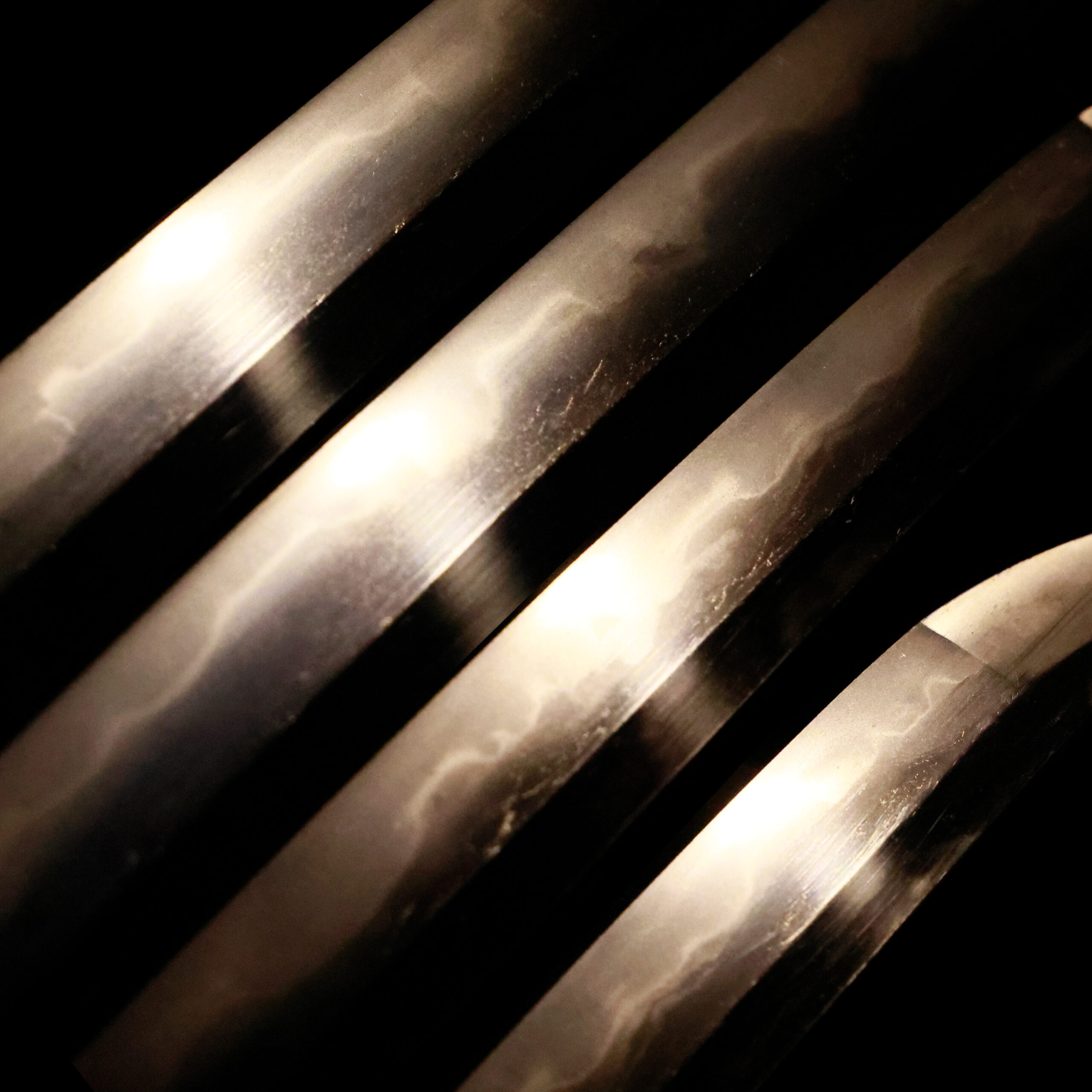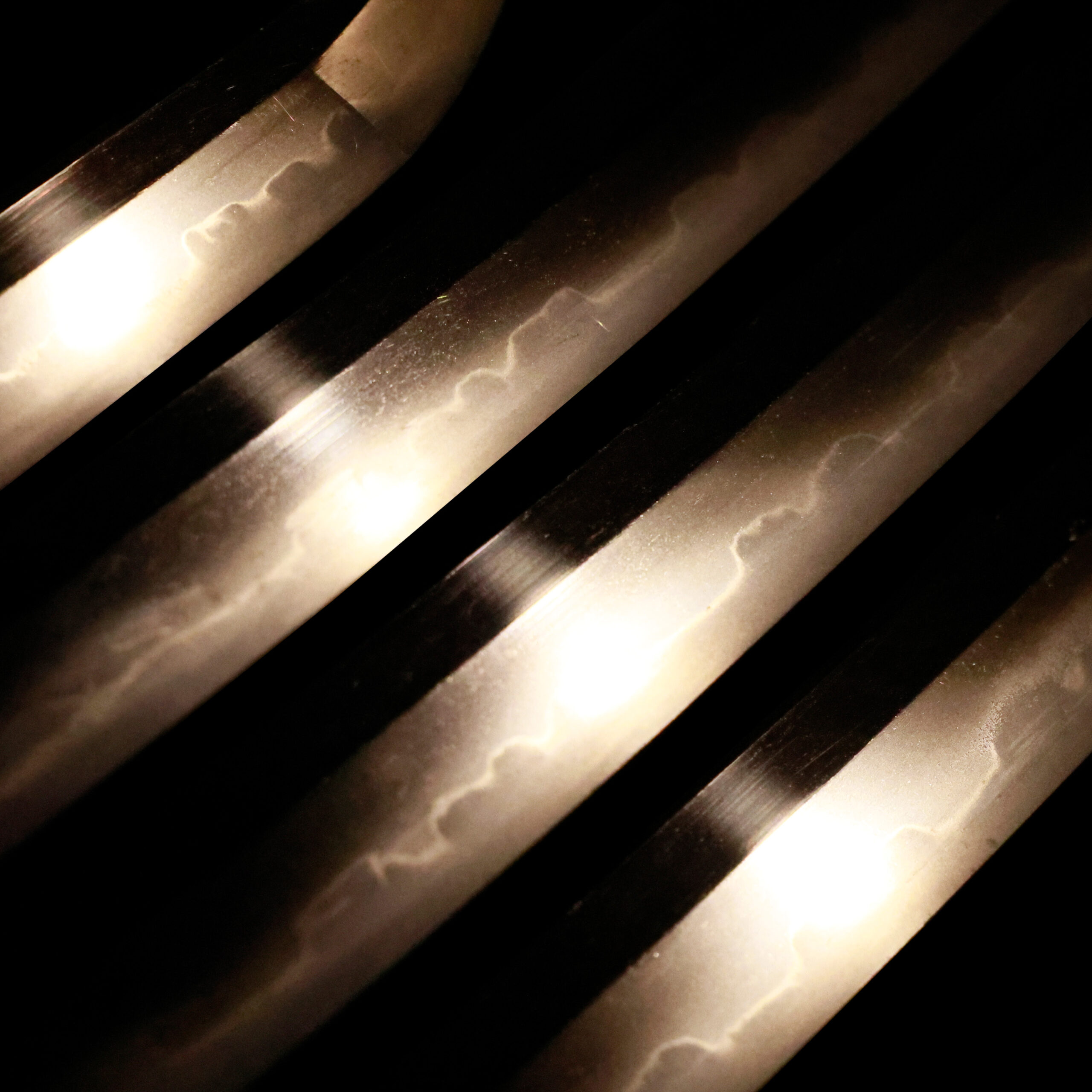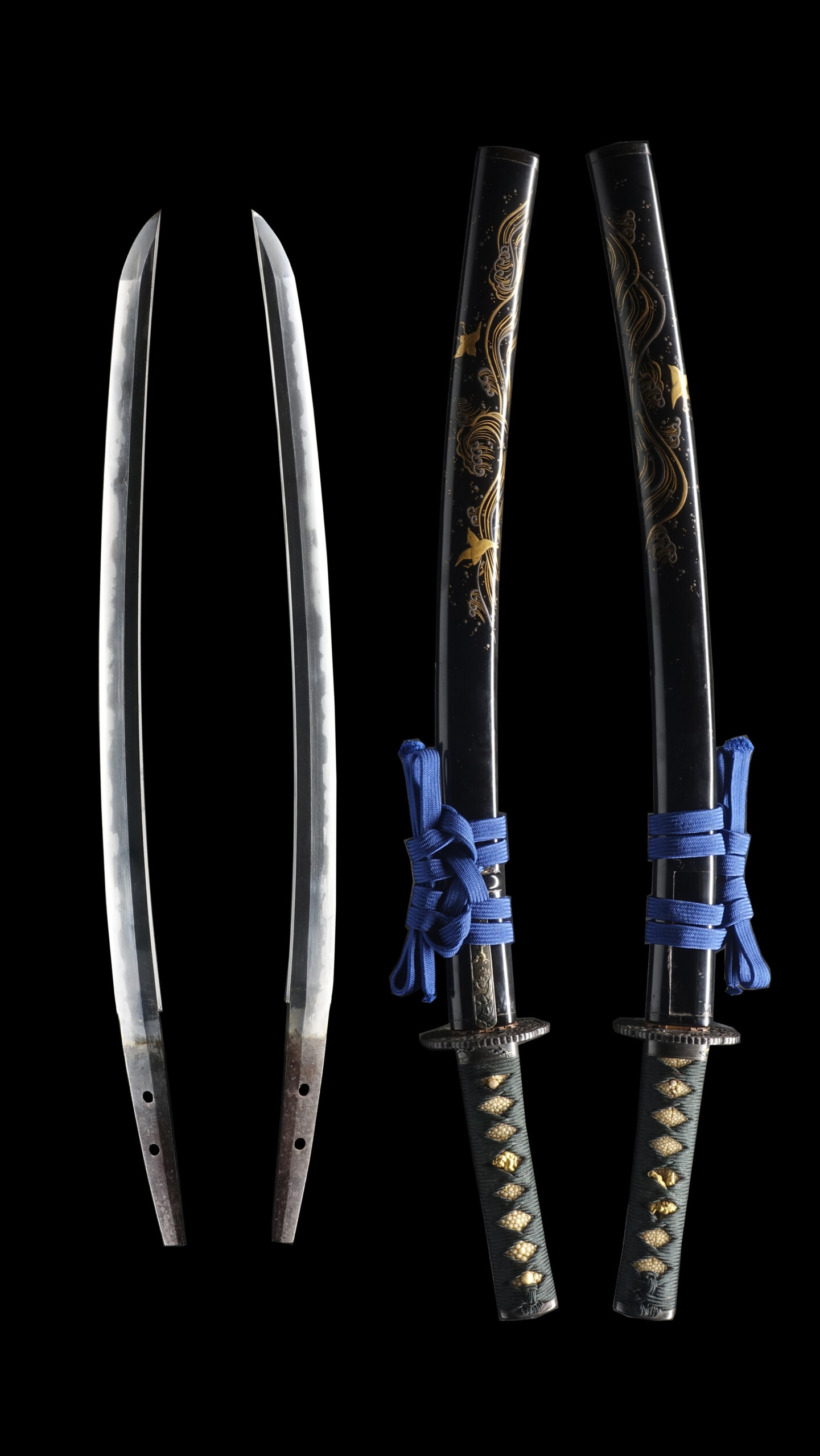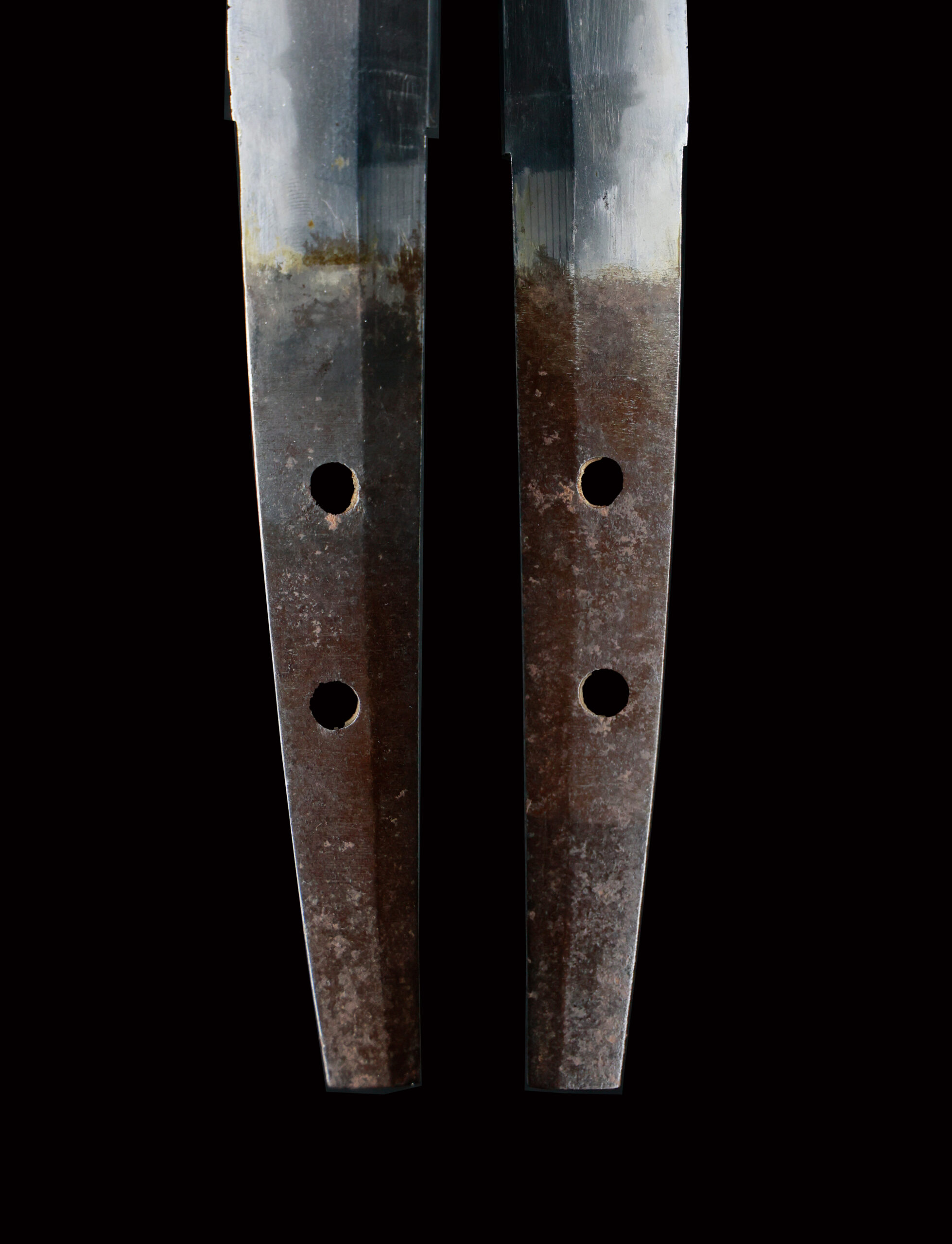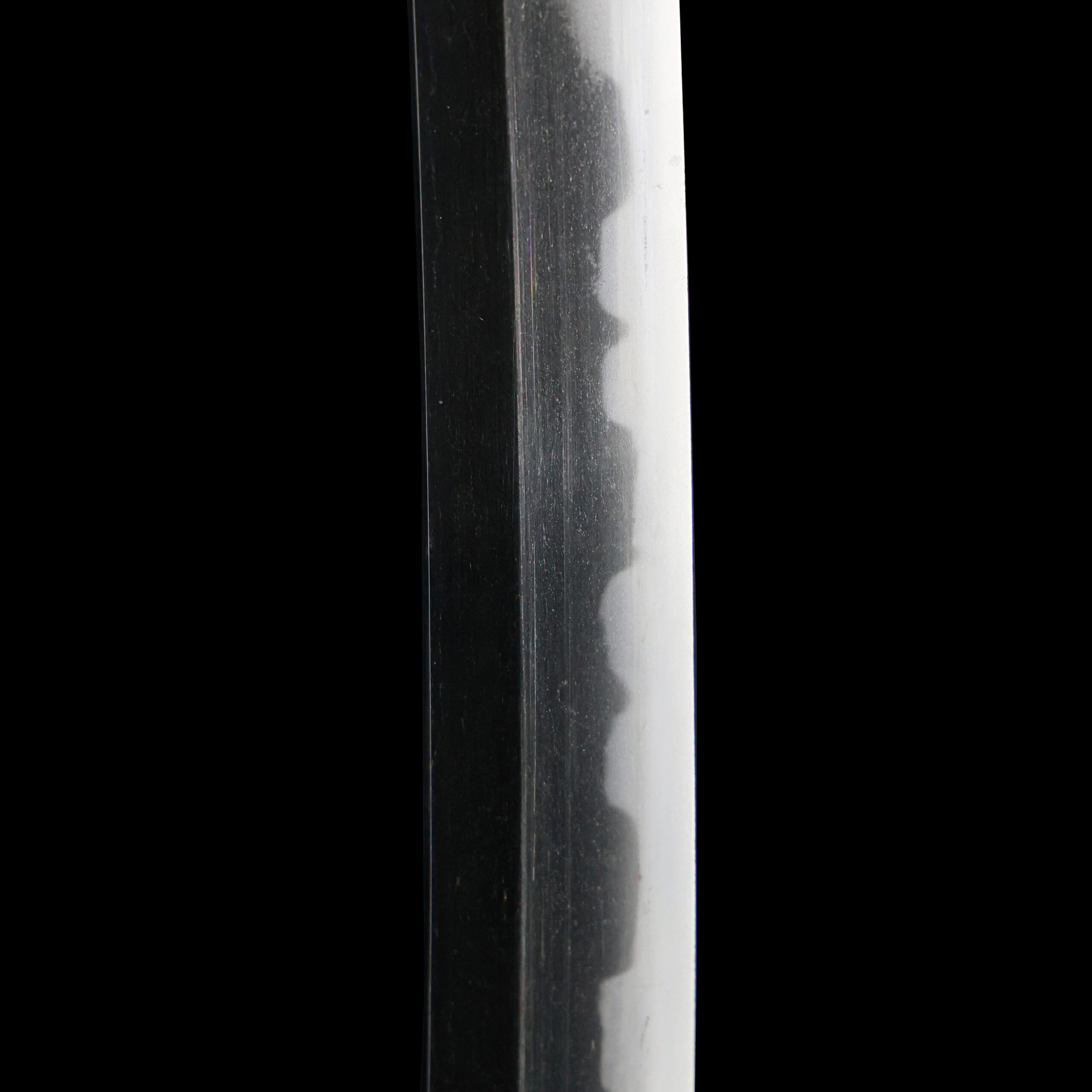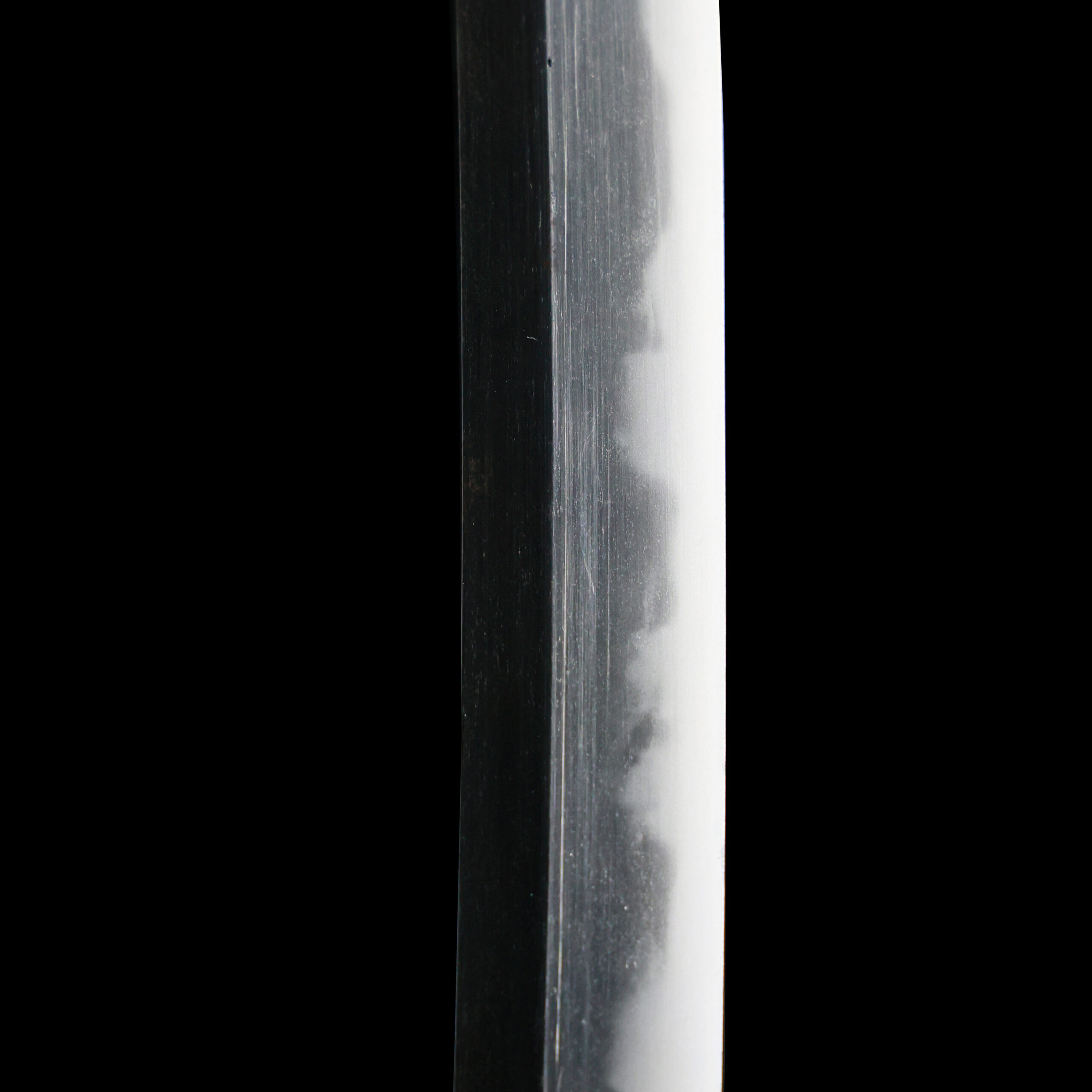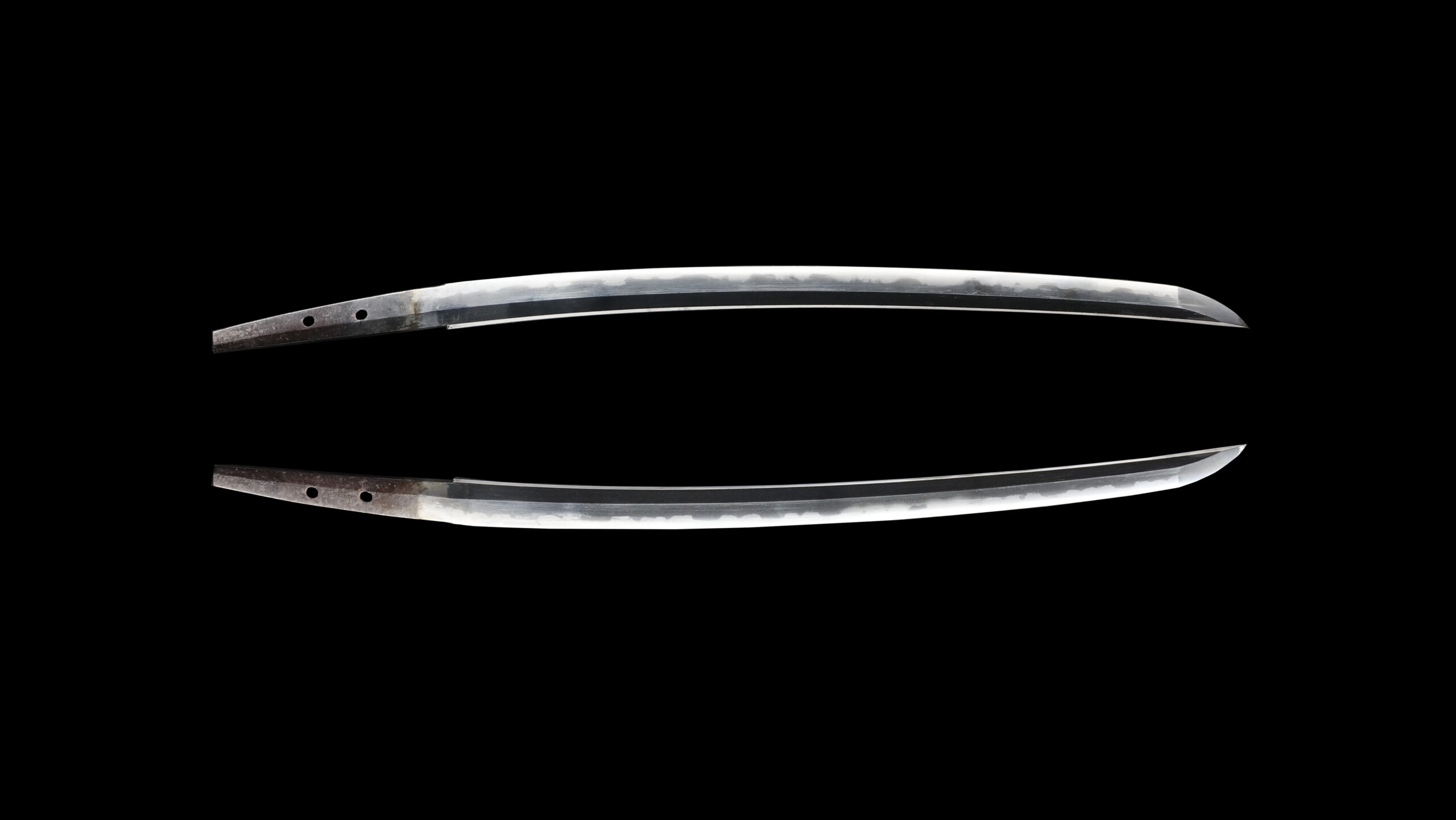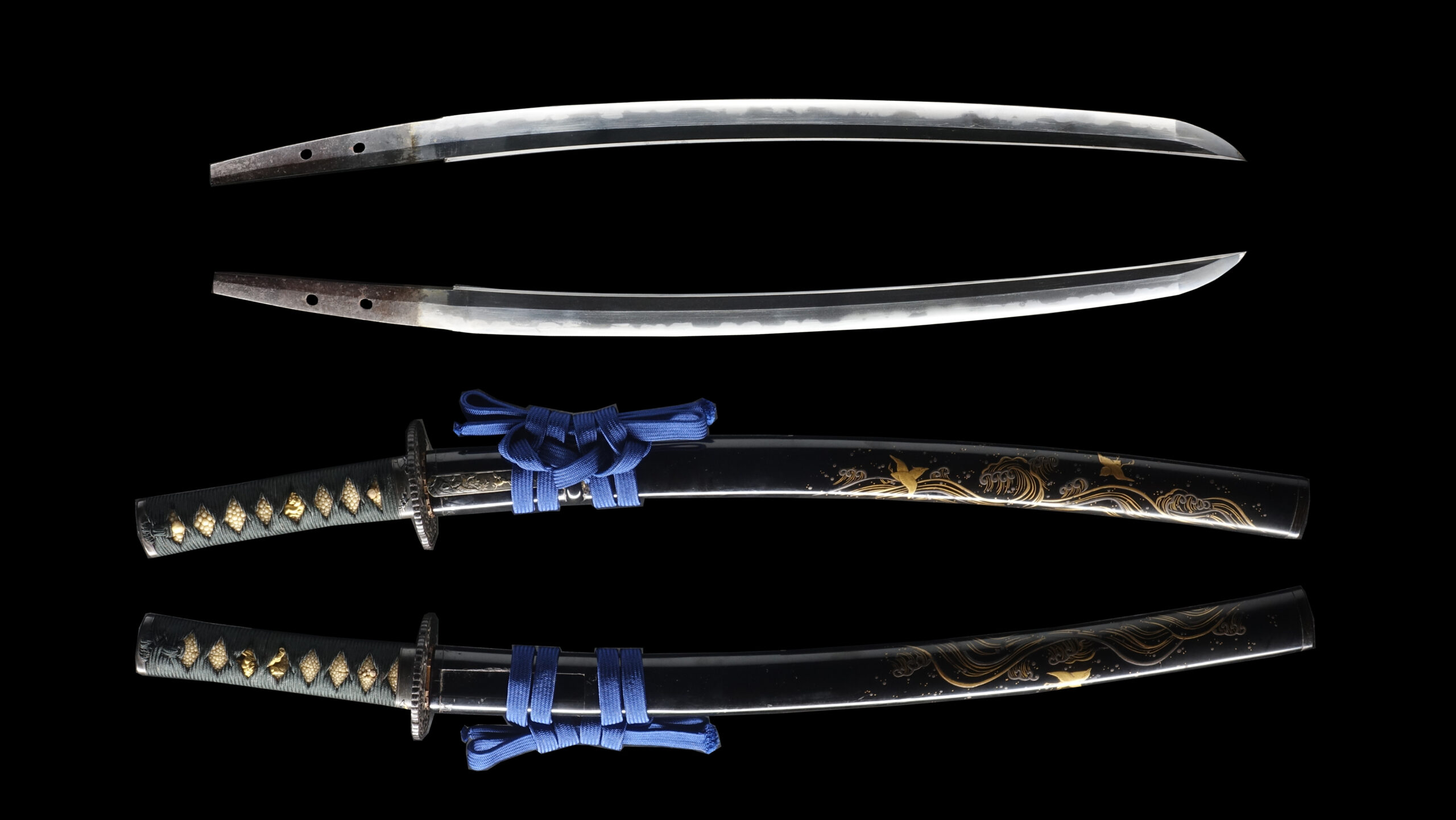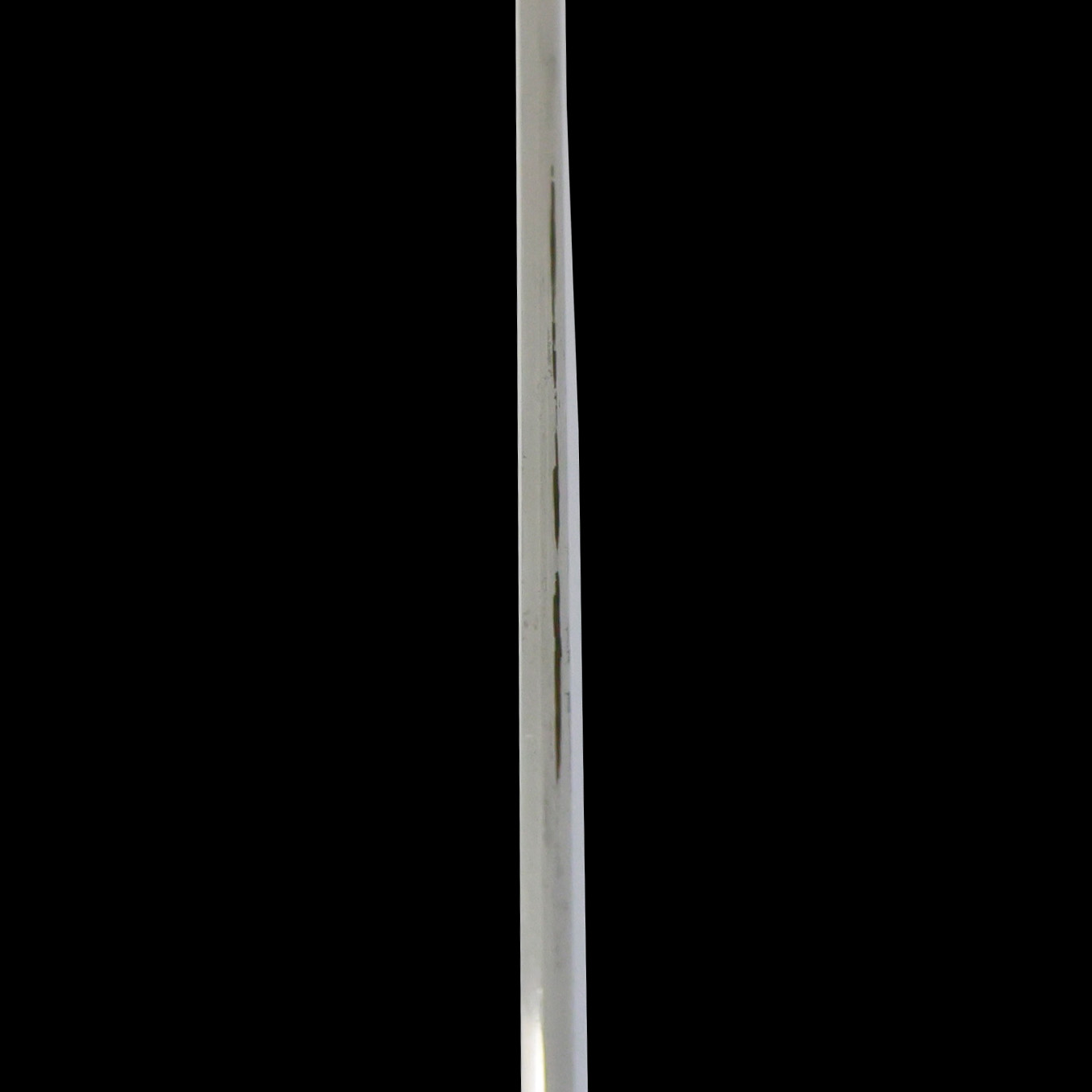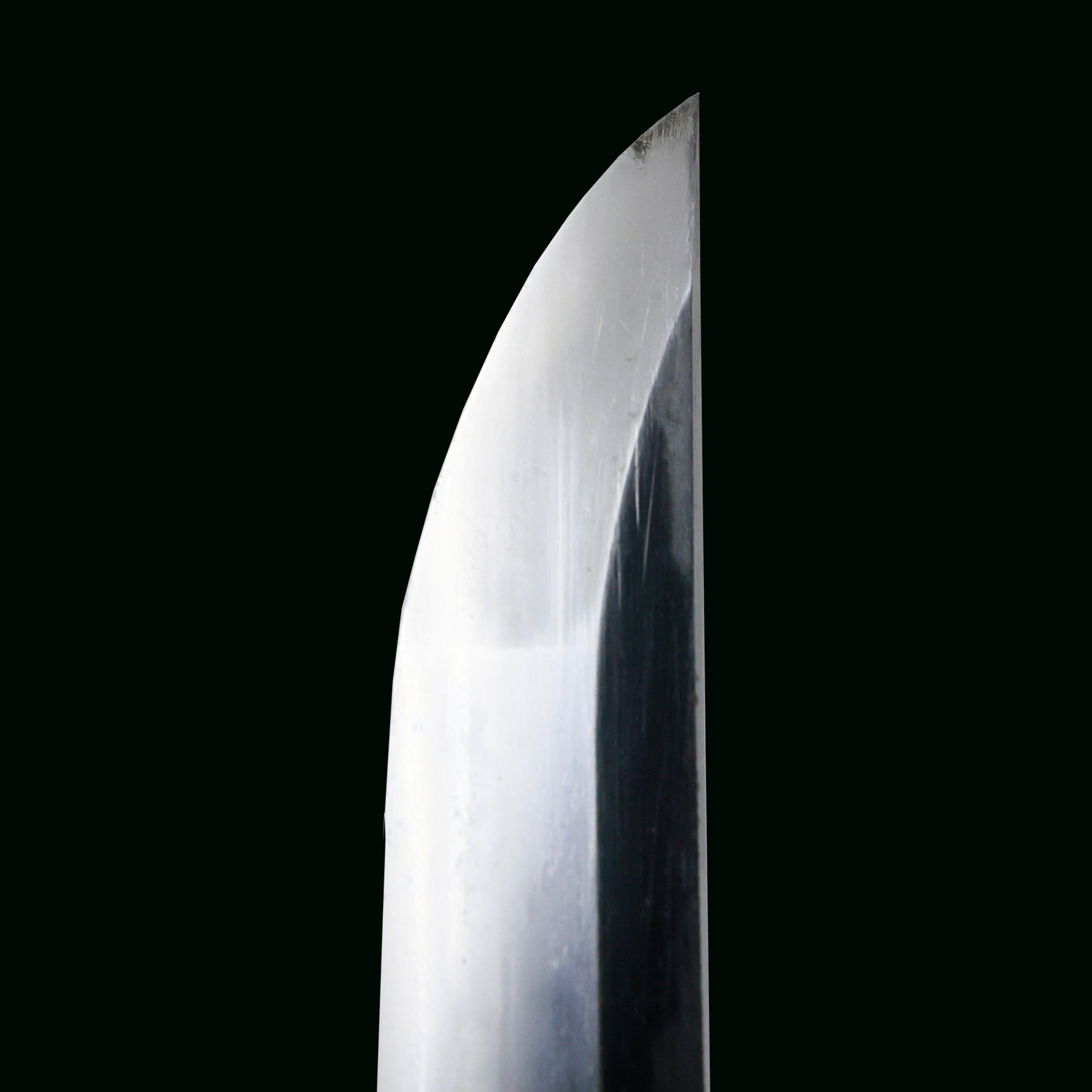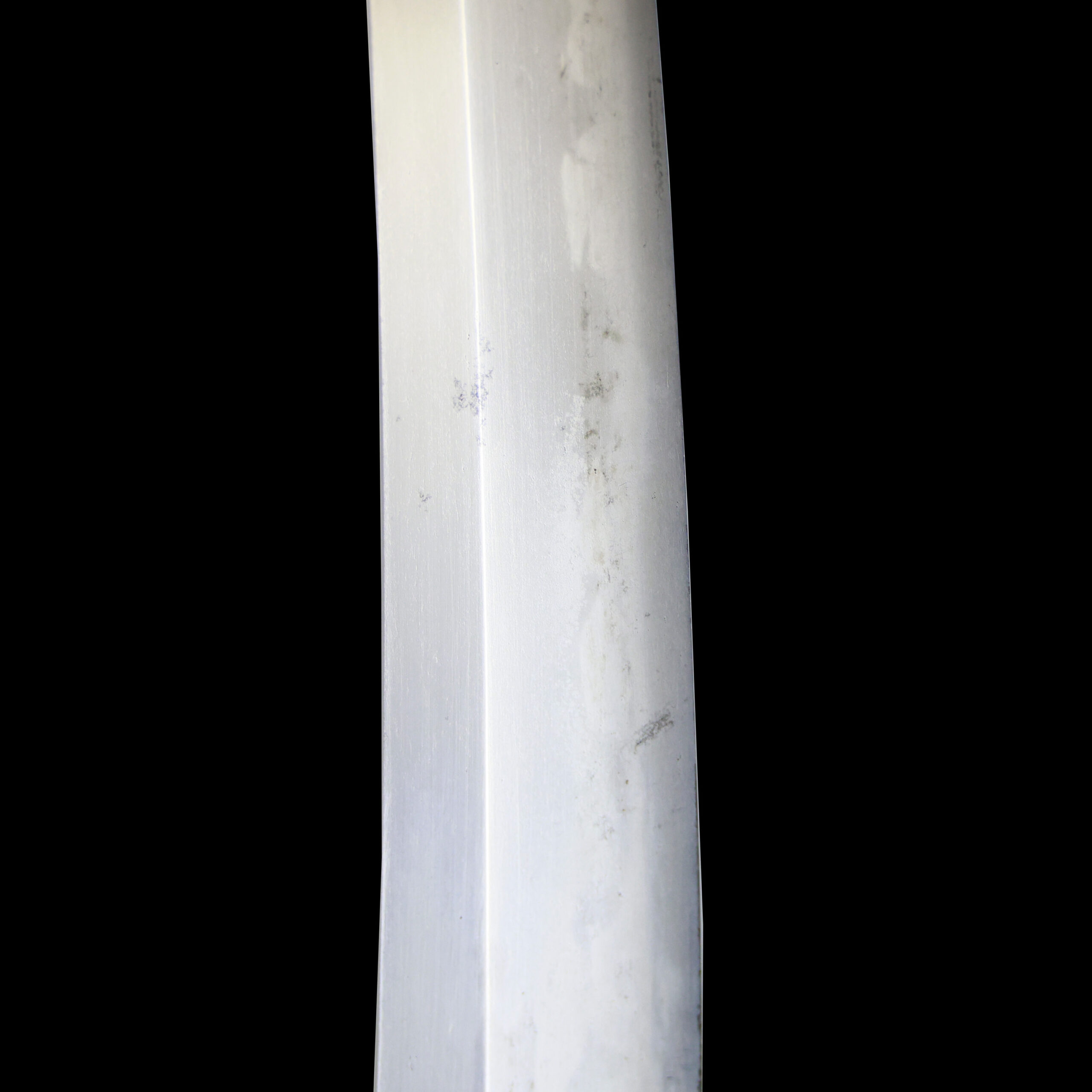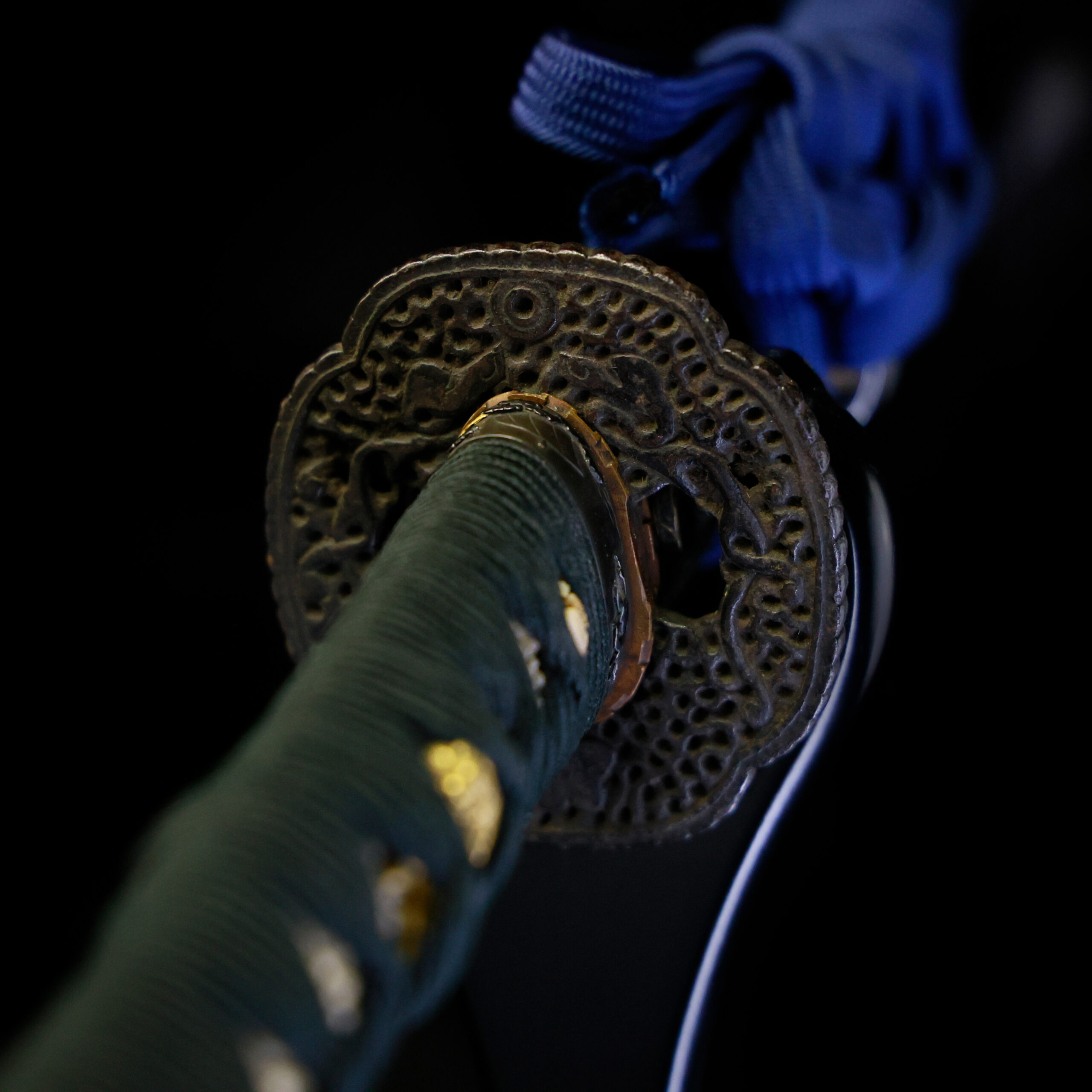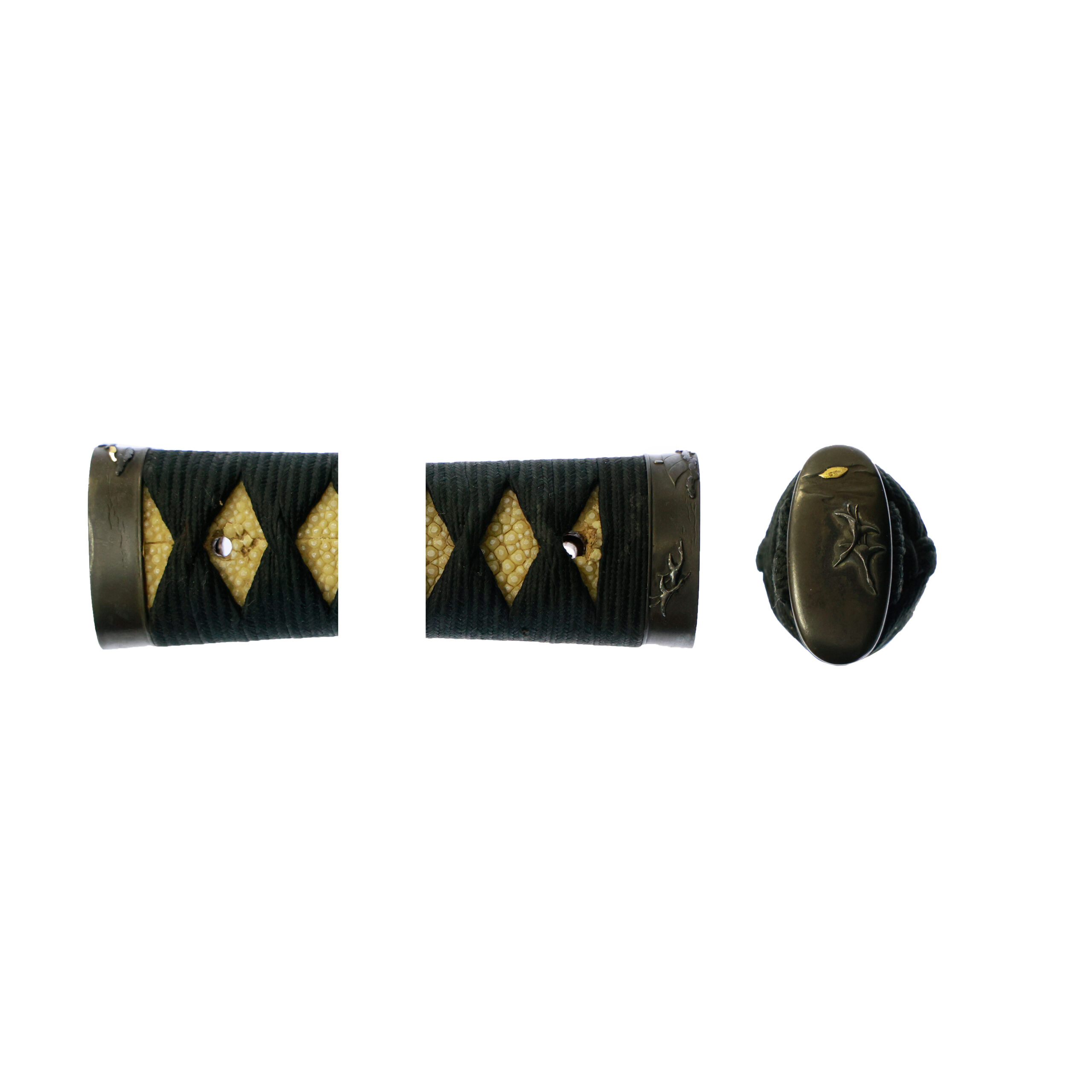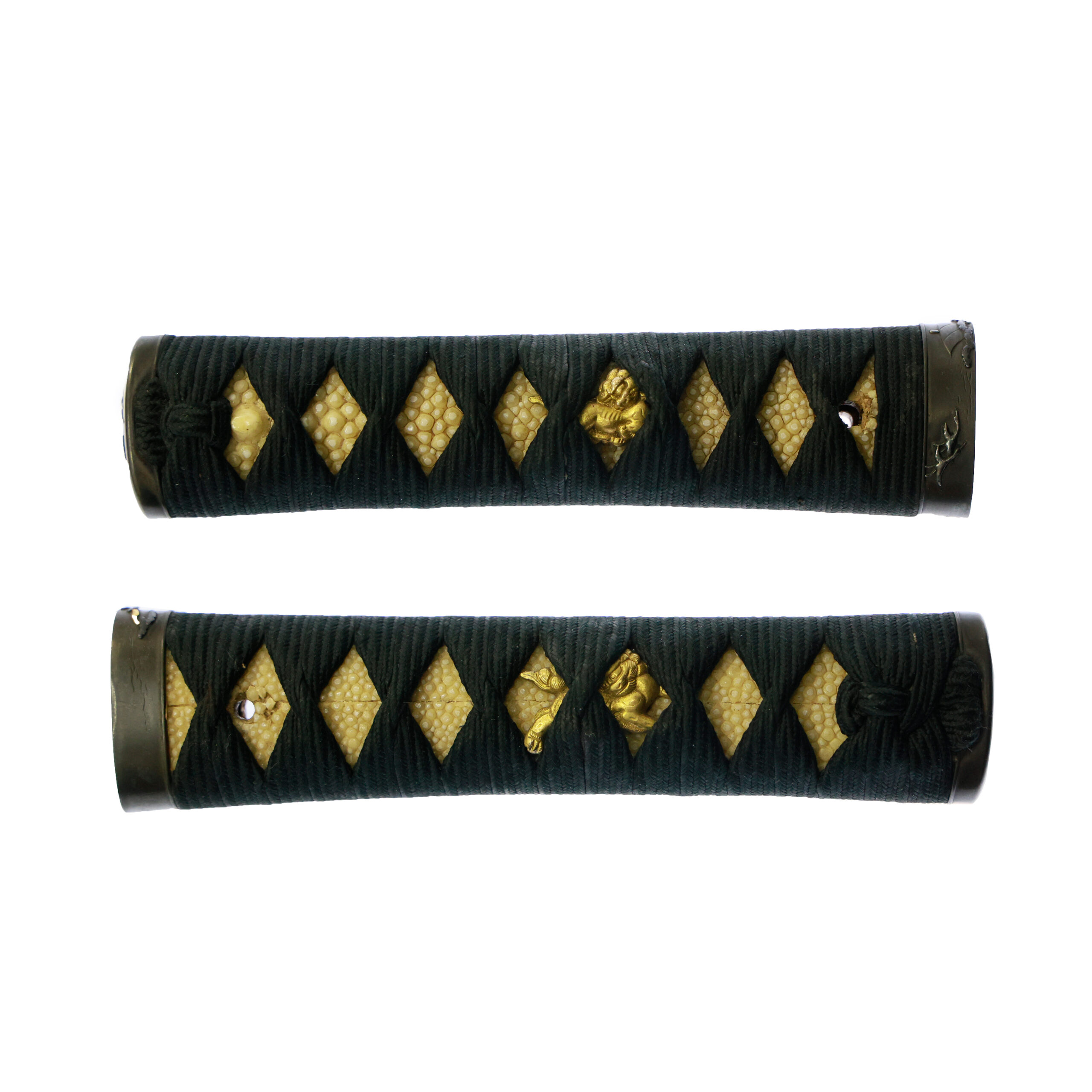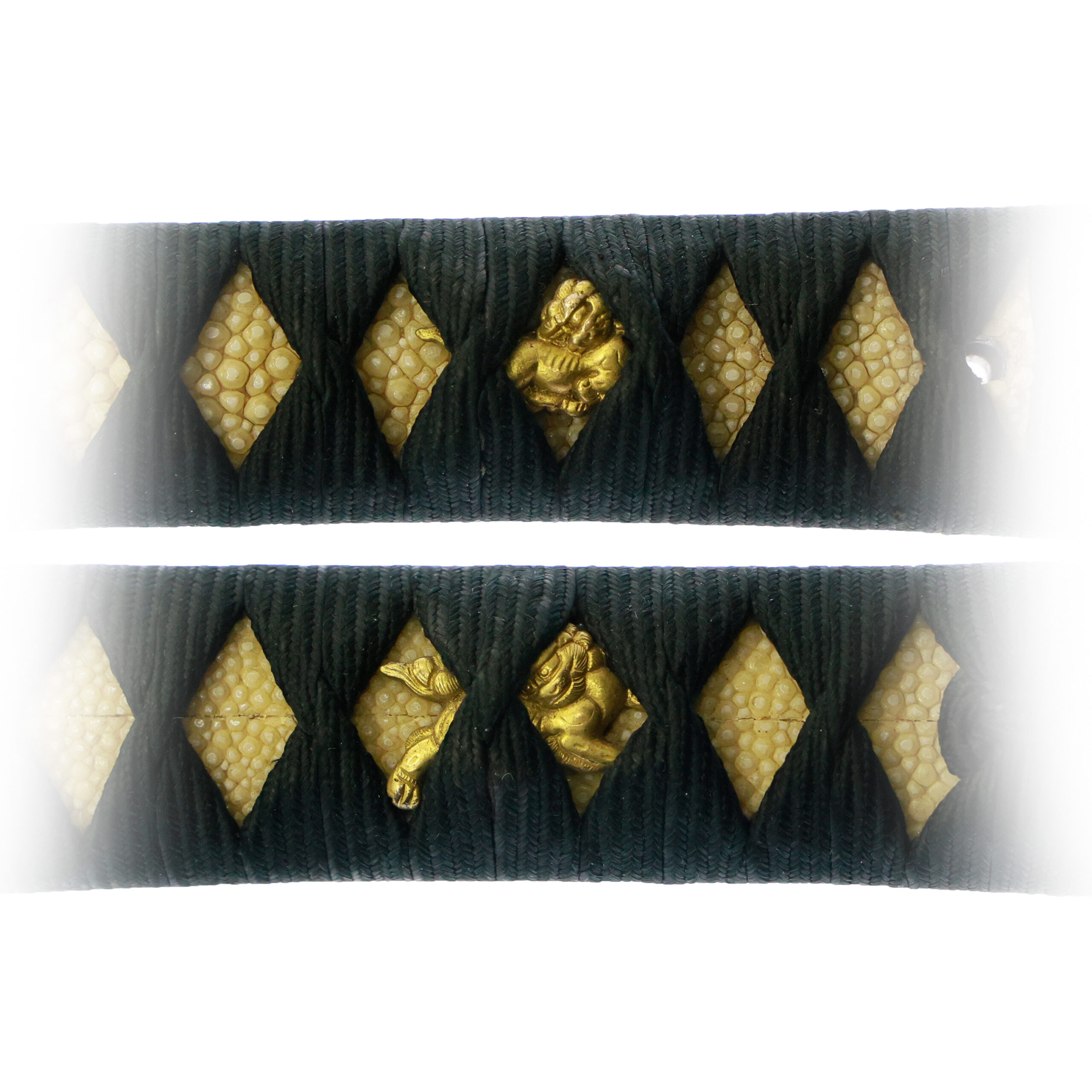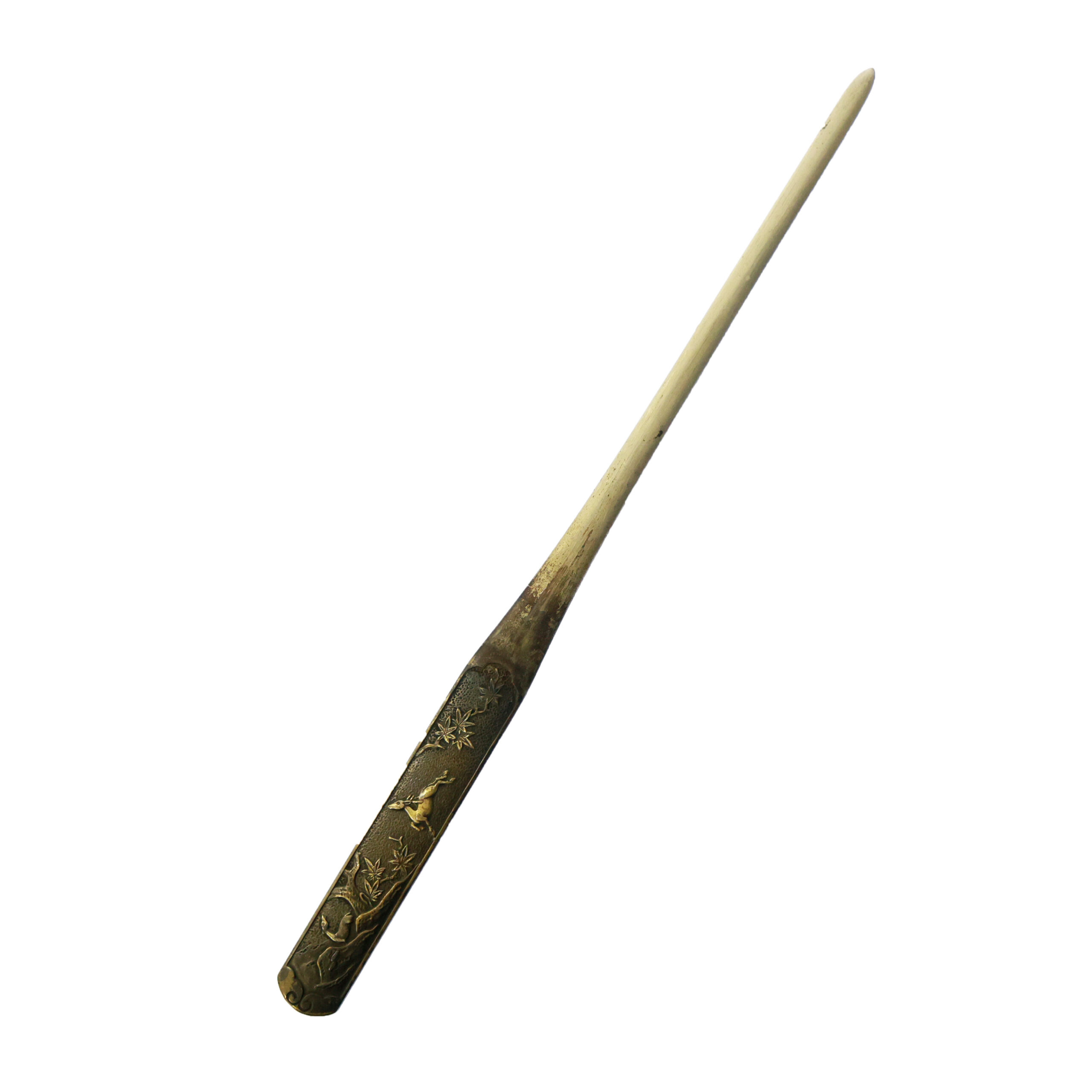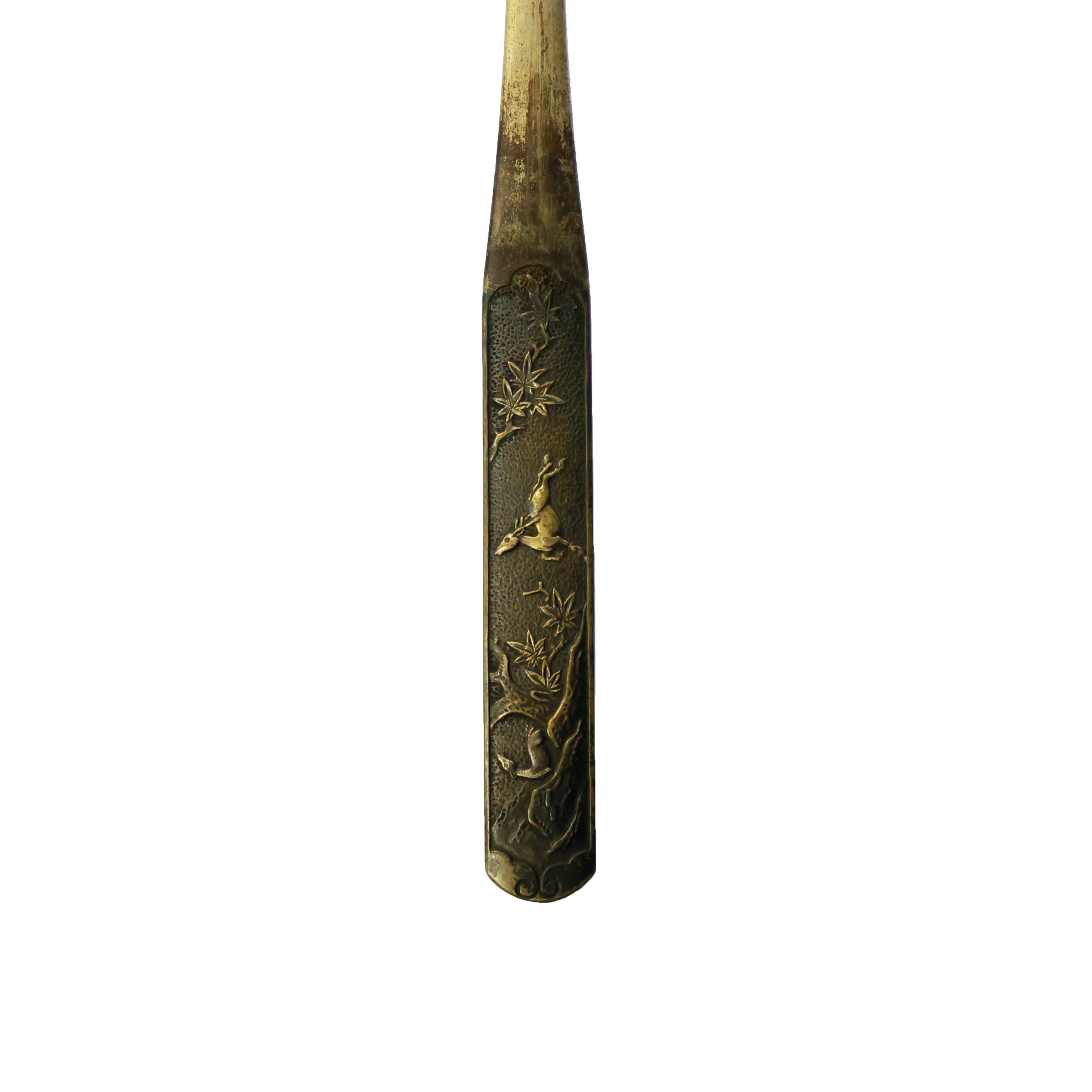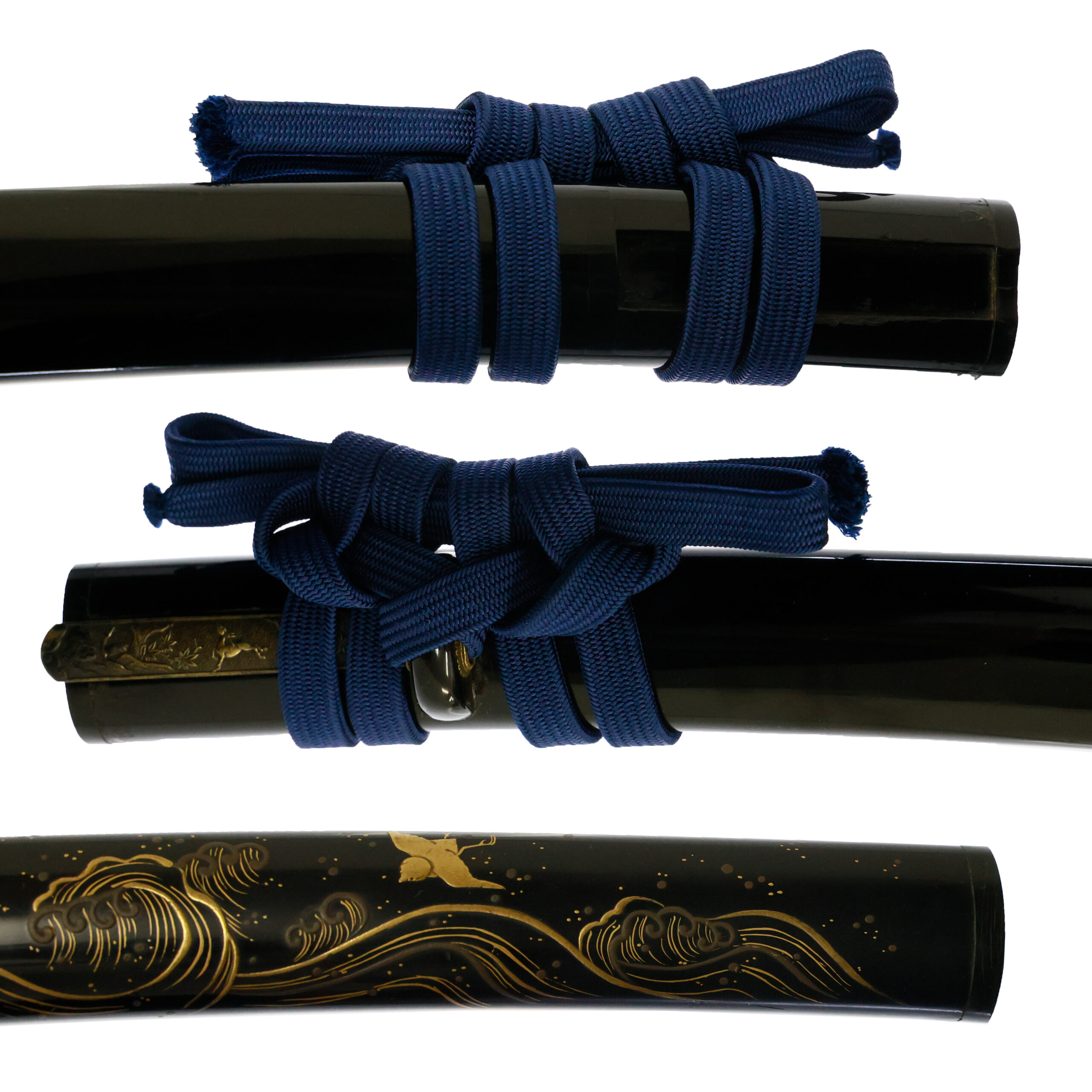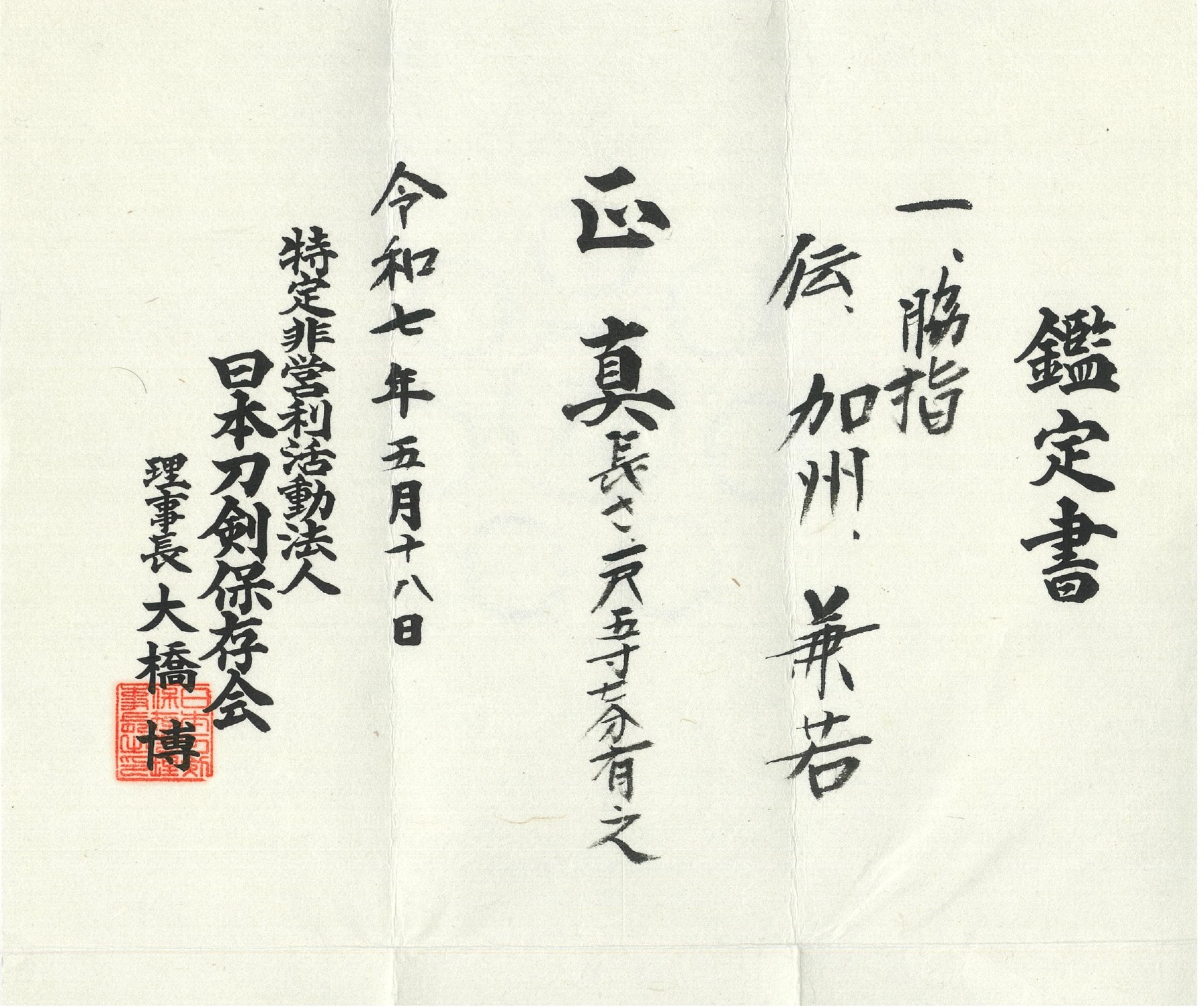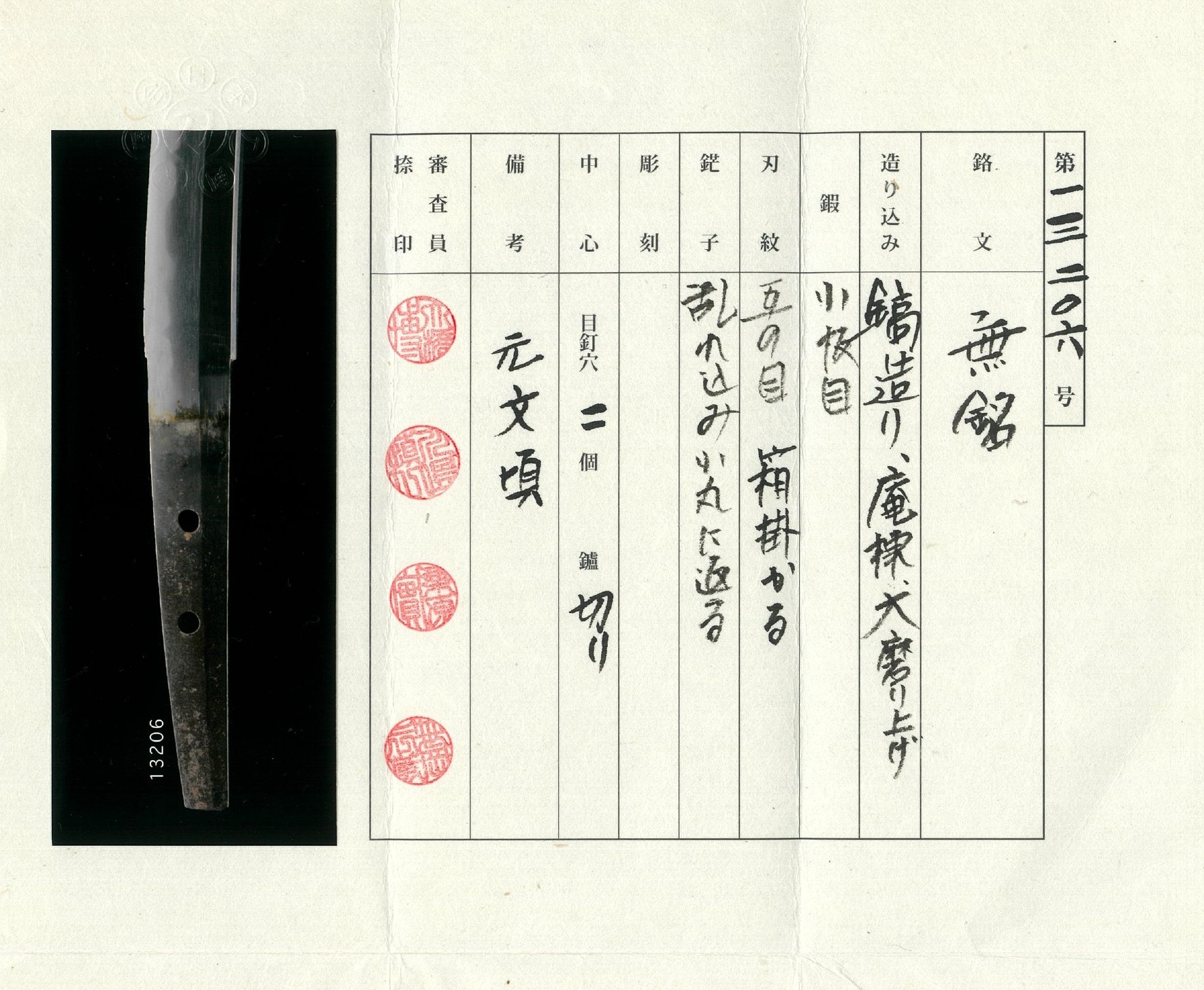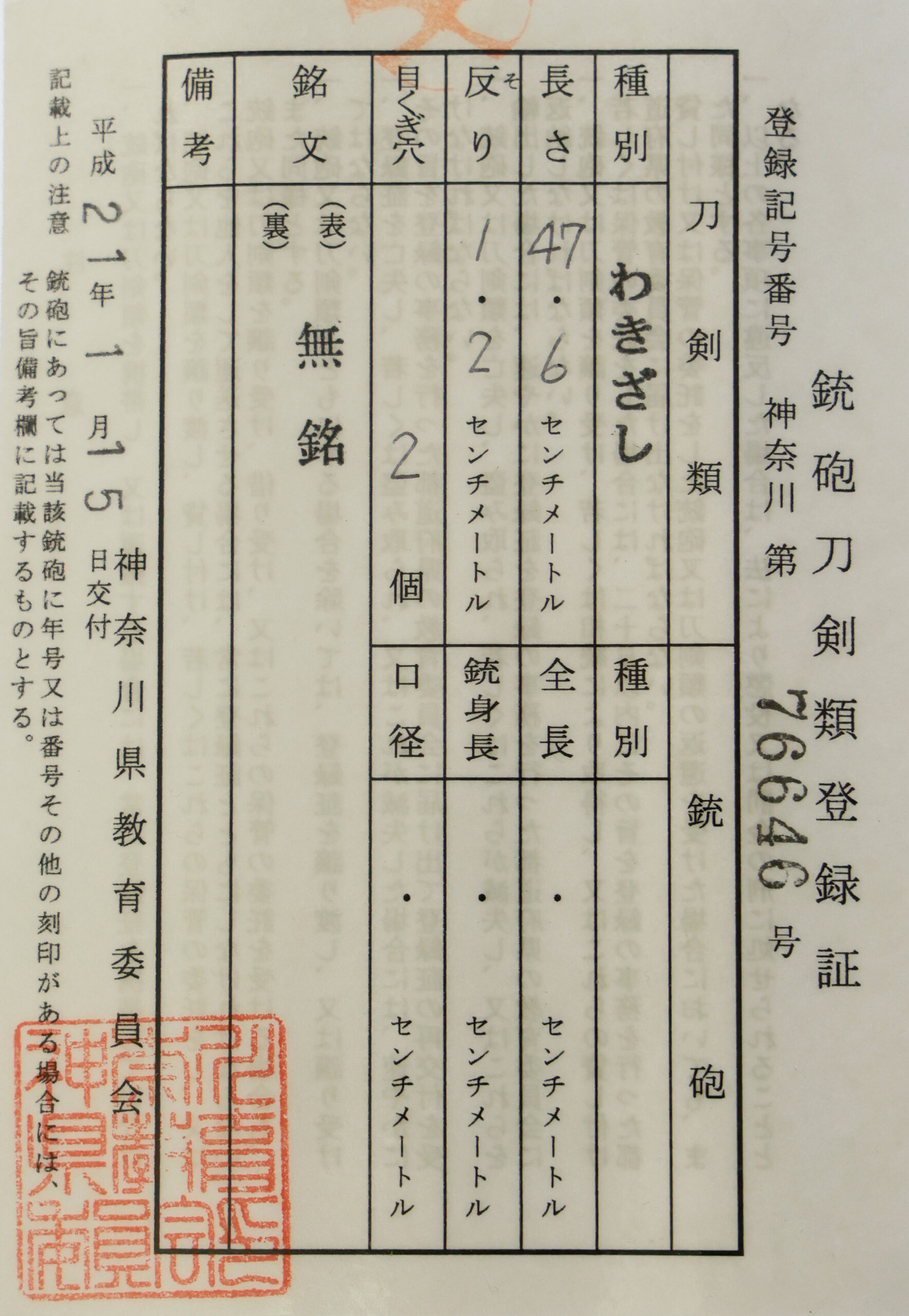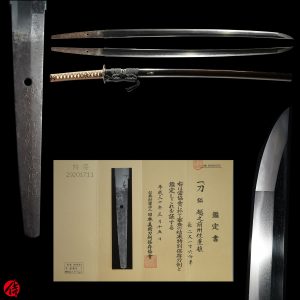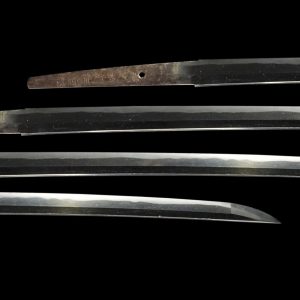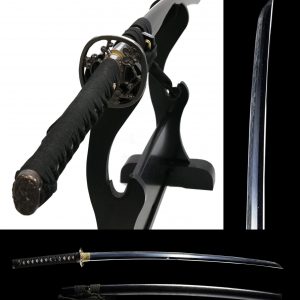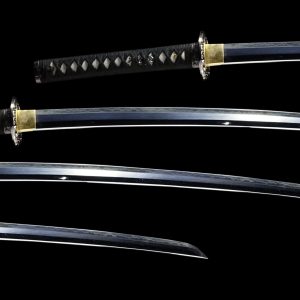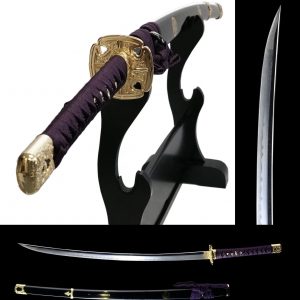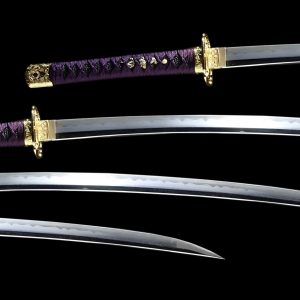Antique Japanese Sword Wakizashi attributed to Kanewaka with NTHK Kanteisho Certificate
【Description】
This blade is attributed to Kashu Kanewaka (賀州兼若) while it is unsigned. Kashu is another name of Kaga province (today’s Ishikawa prefecture), and it means he resided in this area when he forged blades. The maker’s name, Kanewaka, is one of the most prestigious swordsmiths in this province and lasted several generations during the early-late Edo period (approx. 280-400 years ago). According to the NTHK Kanteisho Certificate, this sword was forged around the Genbun era (元文, 1736–1741).
The first-gen Kanewaka was originally from Mino province (today’s Gifu prefecture). Later on, he moved to the Kaga domain (today’s Ishikawa prefecture) at the beginning of the Edo period after being summoned by Maeda Toshitsune, the third-gen head of the Kaga domain. Then, he changed his name to Takahira (高平) and he received an honorable official title, Etchu no Kami for his excellent sword-forging techniques from the imperial court around the 5th year of the Genna era (1619).
Kanewaka was known as one of the most famous swordsmiths in the Kaga domain in the early-mid Edo period. It is said that Kanewaka forged swords for those who belonged to the Kaga domain under Maeda clan’s control. All the swordsmiths who signed Kanewaka in the Kaga domain were under the auspice of Maeda clan from generation to generation because of their highly skilled craftsmanship. Based on the appraisal of this blade, the attribution was given to 5th-gen Kanewaka, judging from his active period.
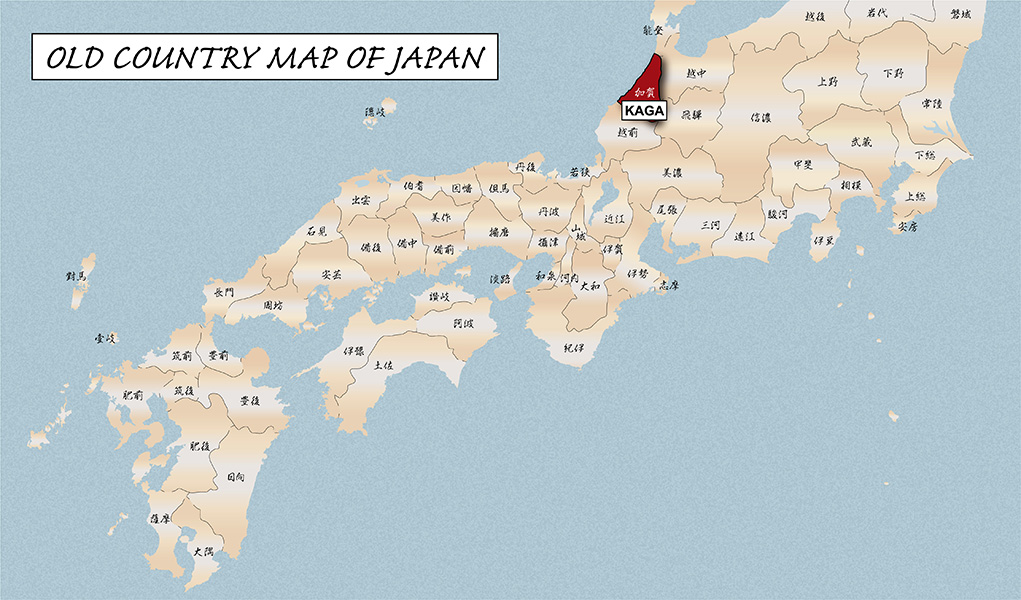
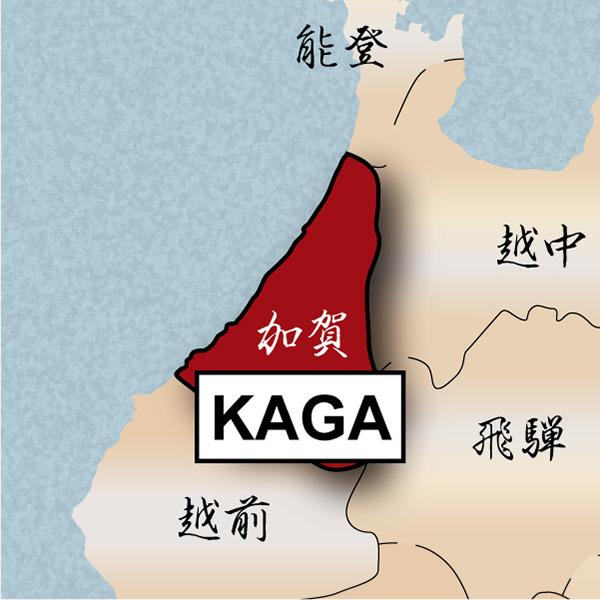
Maeda Clan
Maeda clan was originally a retainer of Oda family, who ruled Owari province (today’s Nagoya area in Aichi prefecture). The first head of the Maeda clan was Toshie Maeda. He climbed the social ladder of Samurai society, and he became the feudal lord of Kaga province (today’s Ishikawa prefecture). It is said that he had a vast rice fief that fed 100 million grown-up adults, which is called Hyakuman Goku. The Maeda clan was one of the most powerful lines in Samurai history. Toshie Maeda had a close tie with Oda Nobunaga and Hideyoshi Toyotomi. It is said that the first-gen Kanewaka forged blades for Maeda Toshiie when Kanewaka was still in Mino province (today’s Gifu prefecture).
*Please keep in mind that there are a couple of black rust spots as well as some Kitae Kizu on this blade. If you like to know the detailed condition, please feel free to contact us.
【 Blade】
Cutting Edge Length (Nagasa):47.6 cm (18.7 inches)
Curvature (Sori):1.2 cm (0.47 inches)

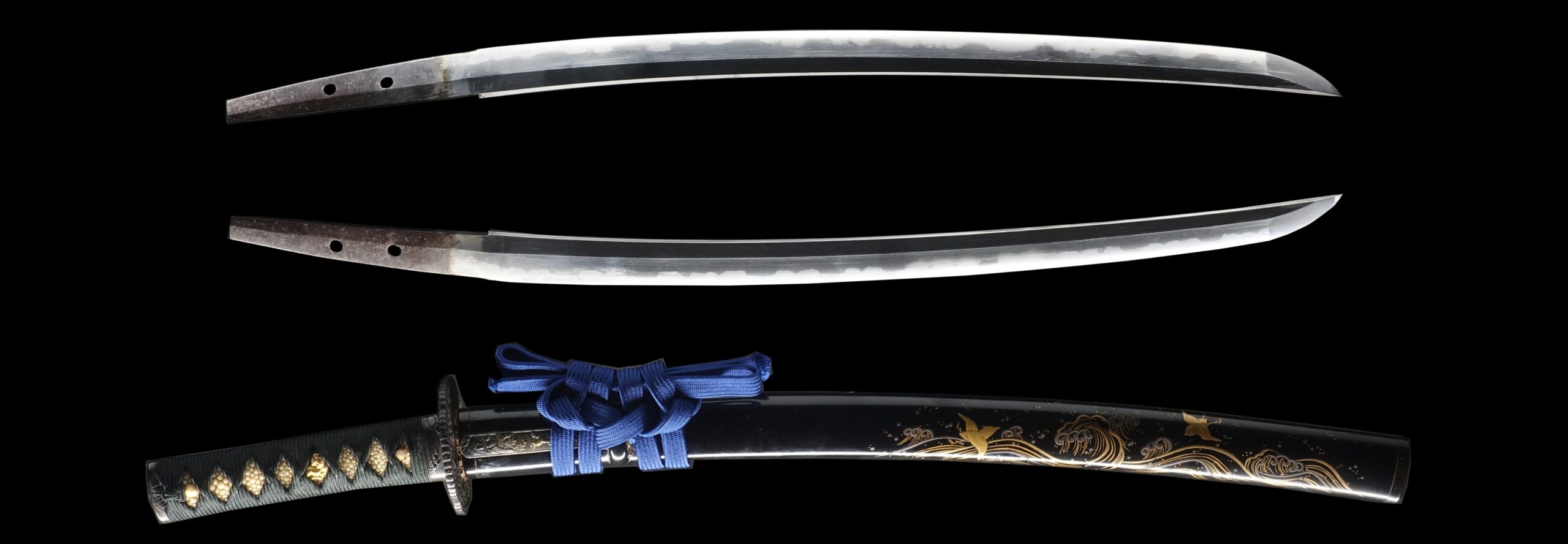
Hamon:
the crystalline structure which forms along the cutting edge of a blade as a result of the hardening process
Jimon(Jihada):
visible steel surface pattern created by folding and hammering during forging process
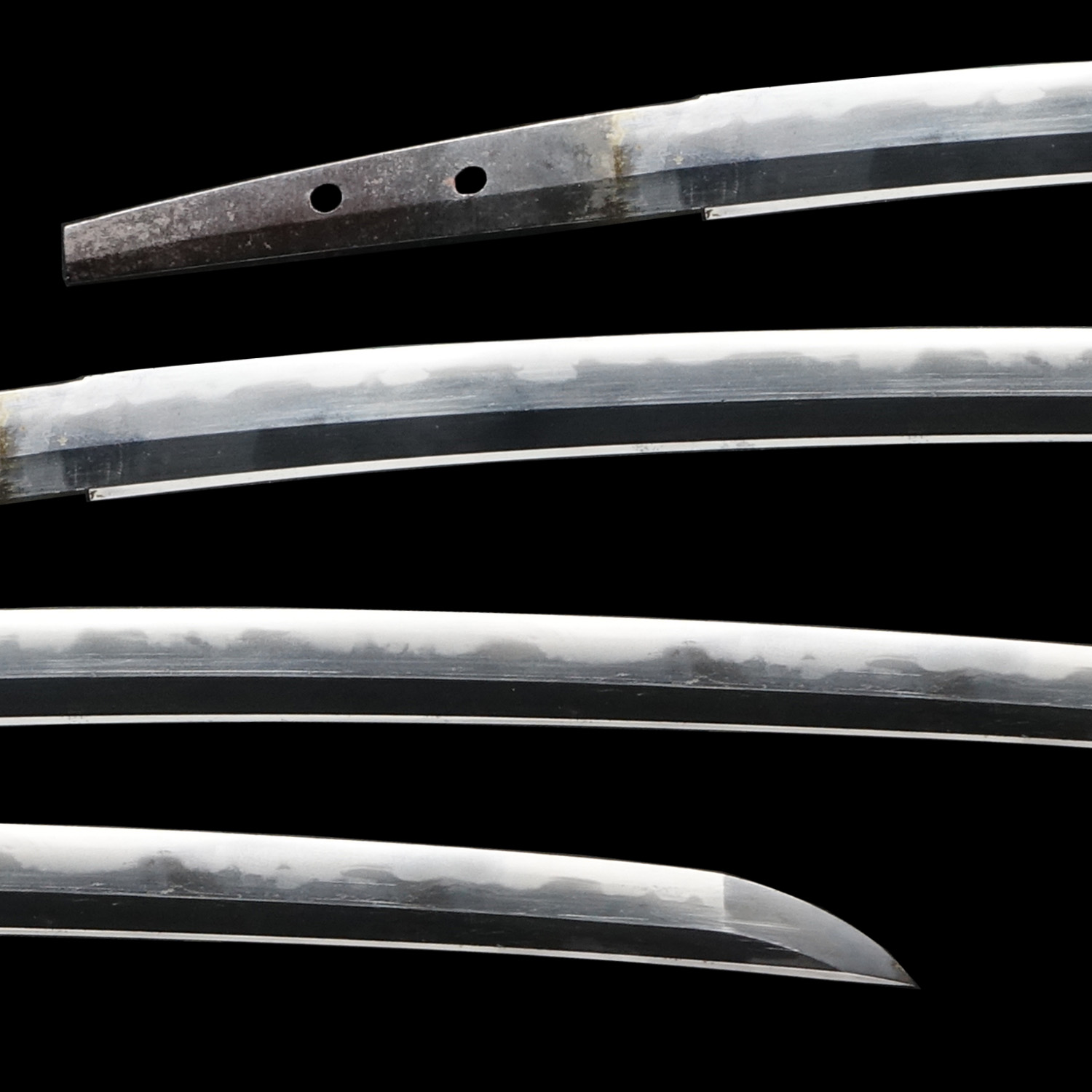
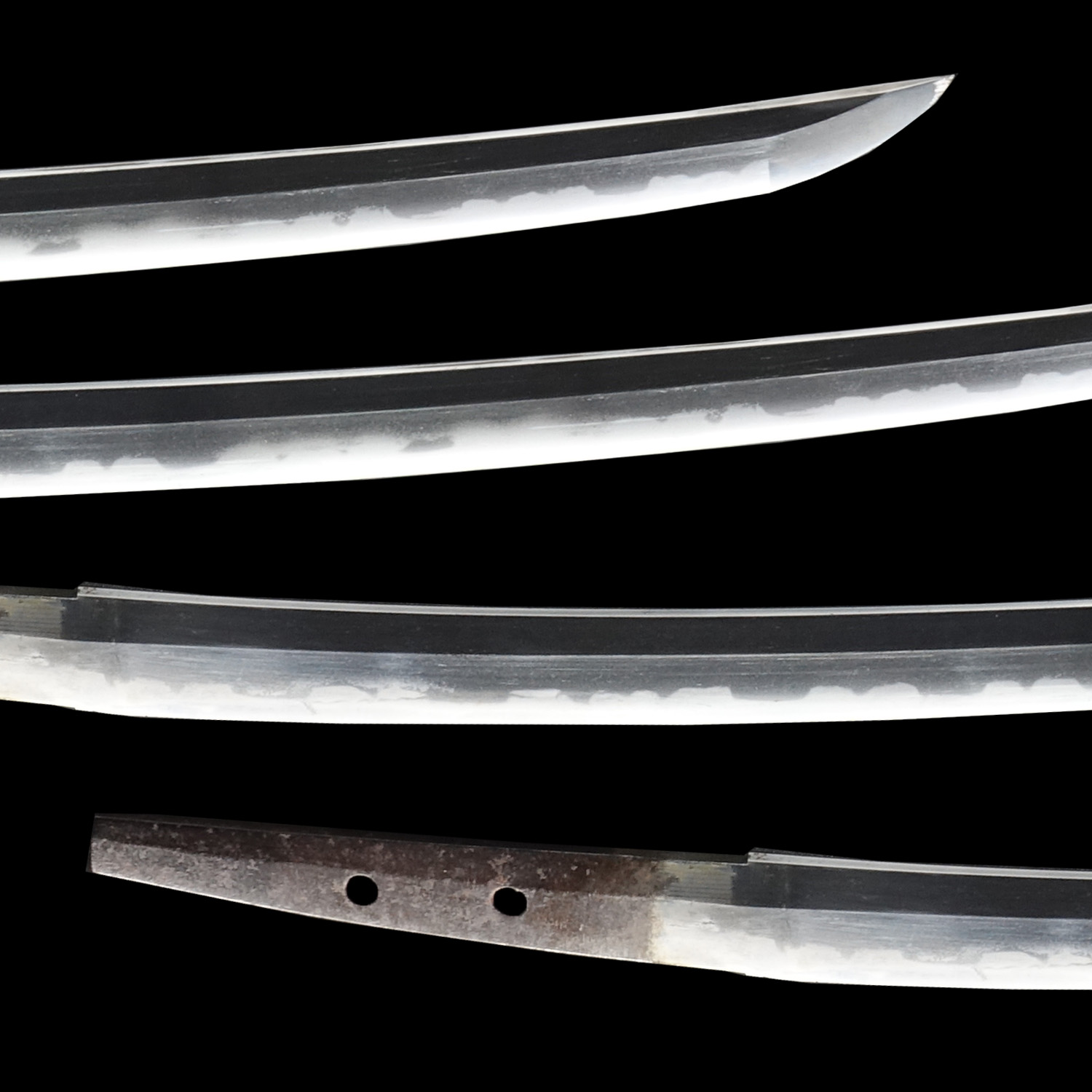
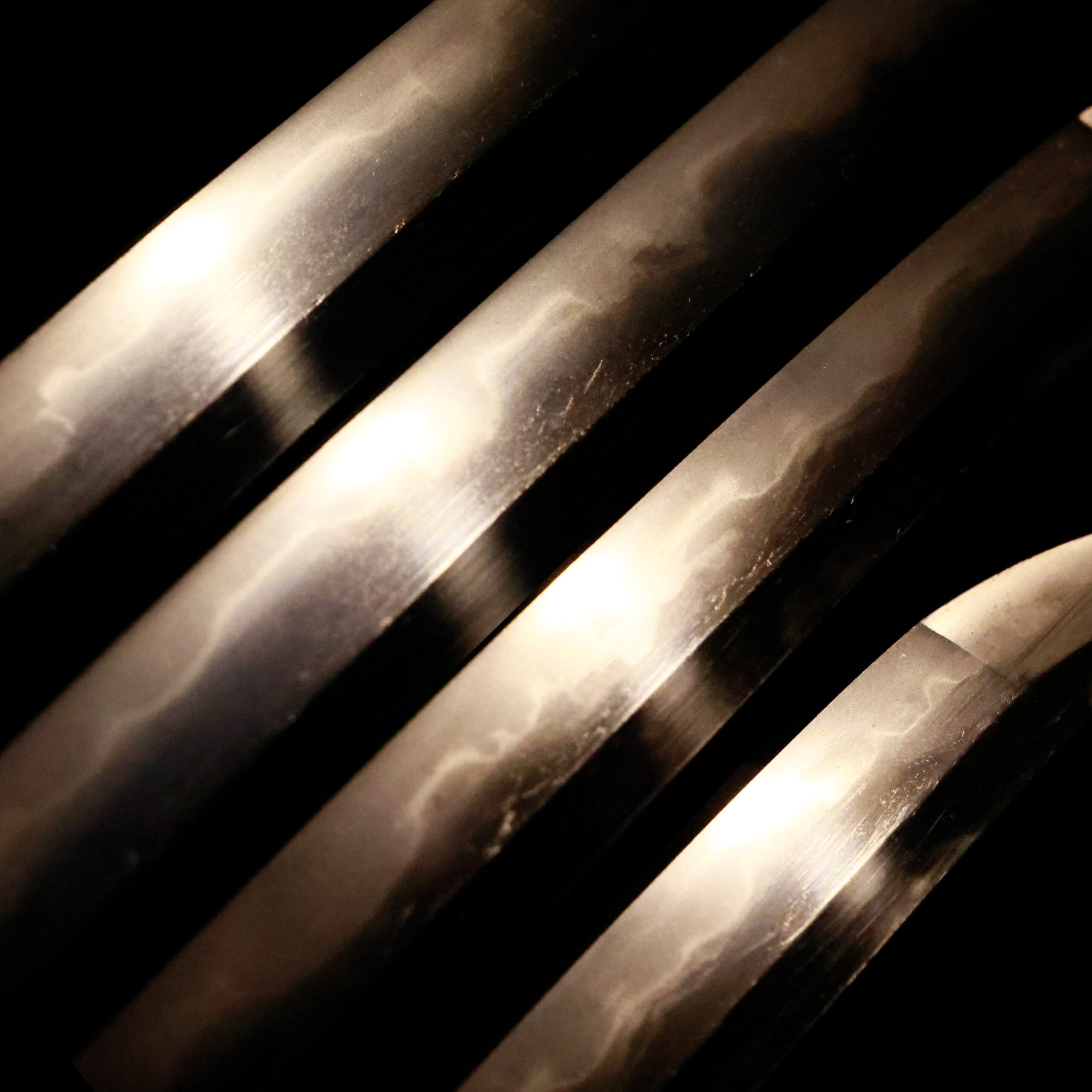
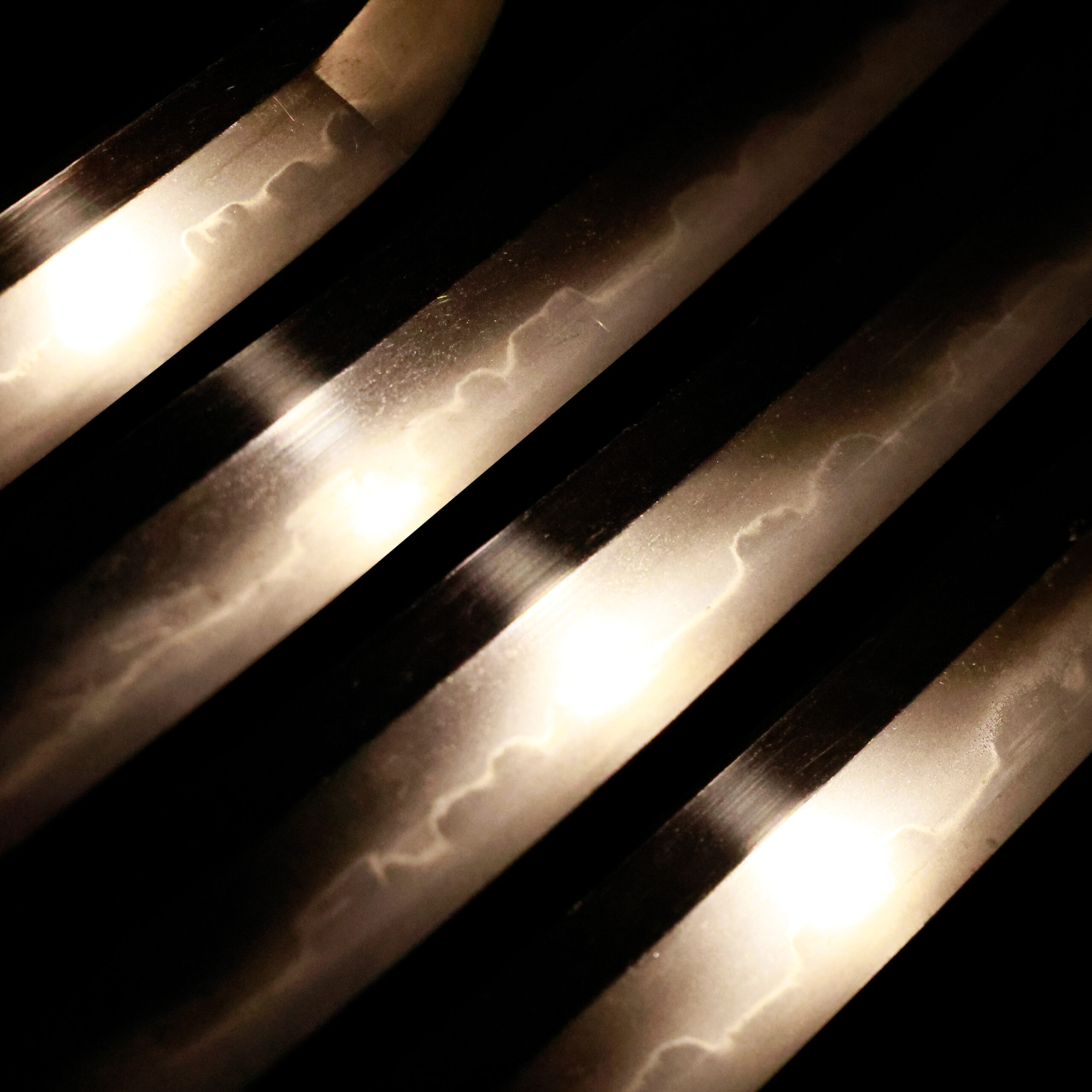
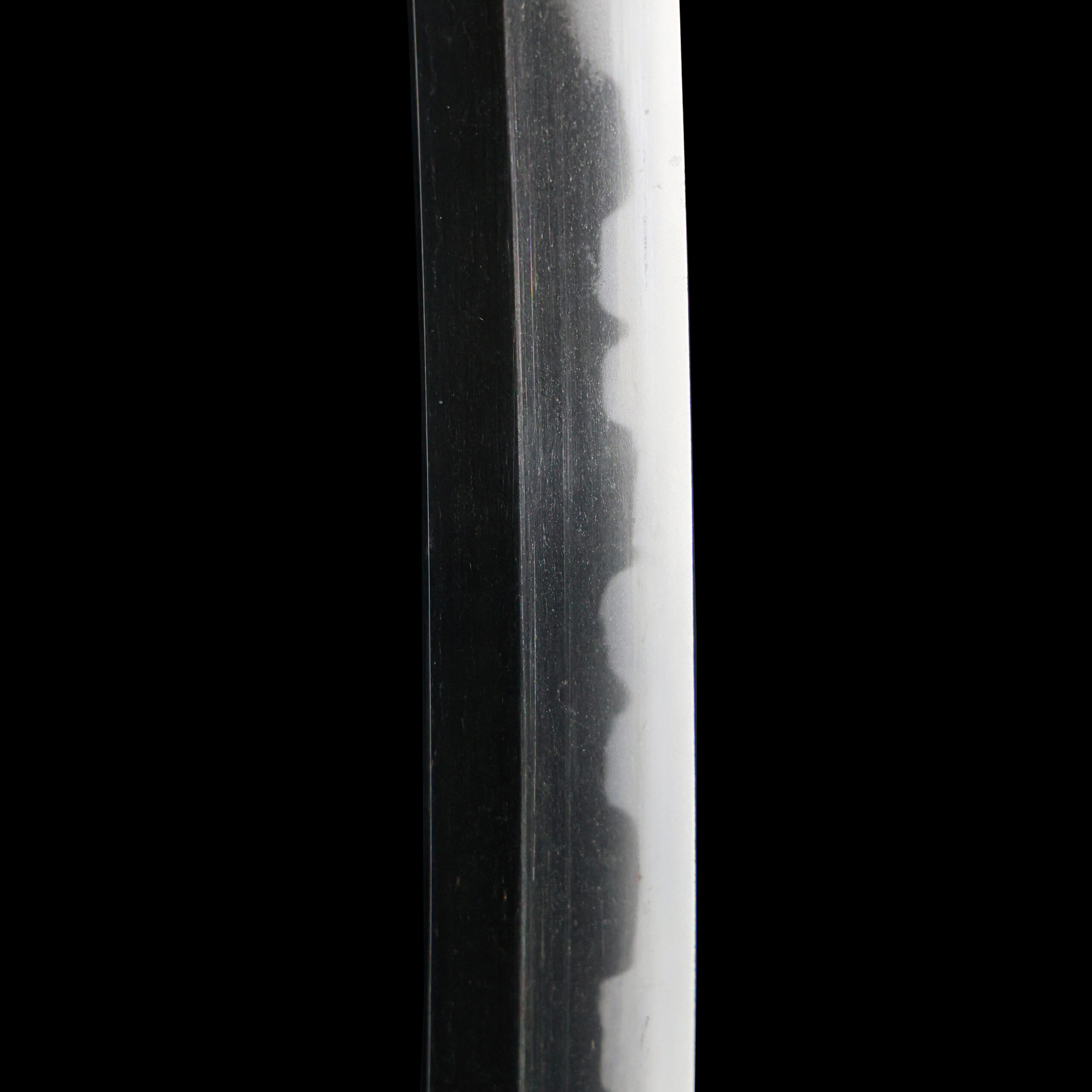

Kissaki:Kissaki is the tip of the Japanese sword.
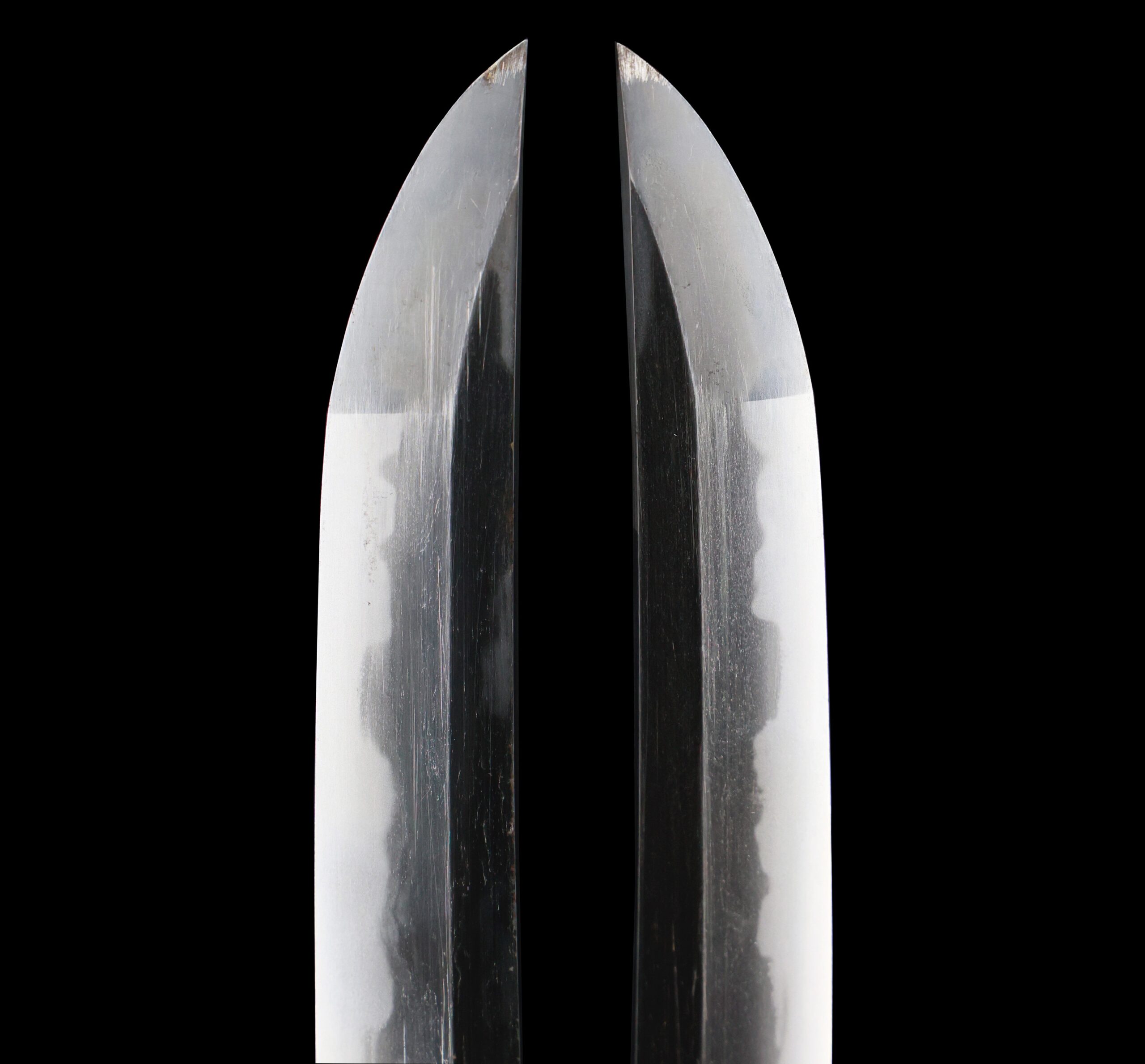
Nakago:Nakago is the tang of the Japanese sword.
Japanese swordsmiths left the black rust on the tang because it prevents red rust while the tang is in its handle. And the discoloration of the tang was created over time, and it is a great indicator for a Japanese sword specialist to estimate when the sword was forged.
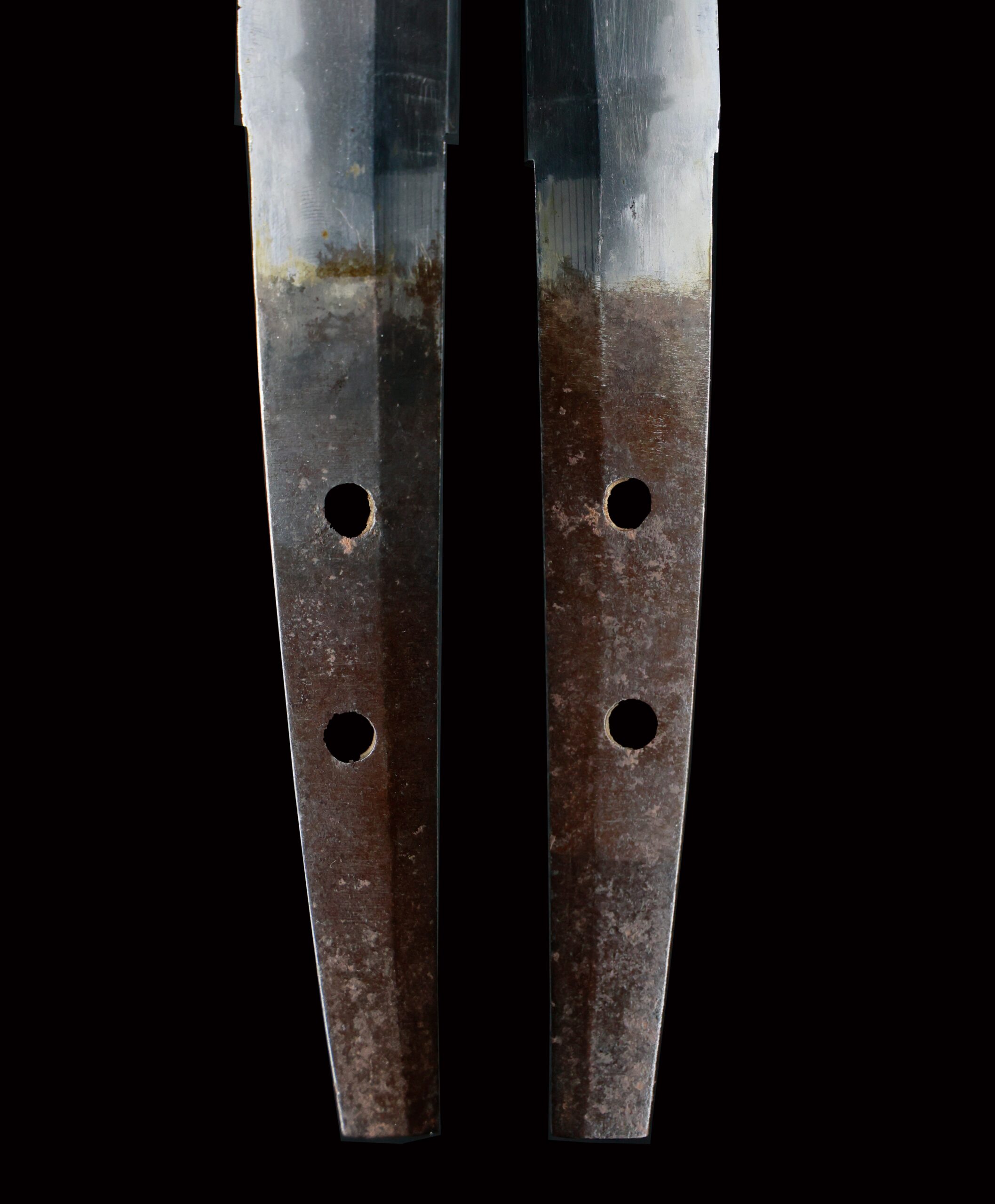
Koshirae:Koshirae is the mounting of the Japanese sword. There are several parts that consist of Koshirae such as Saya (Scabbard), Tsuka (Handle), Tsuba (Handguard).

Fuchi-Kashira:A pair of matching sword fittings that cover the upper and bottom parts of its sword hilt.
This Fuchi-kashira (縁頭) features a traditional Japanese motif. On the left side, two birds—likely chidori (千鳥)—are depicted in flight. Chidori often appear in the classic design known as nami ni chidori (波に千鳥, “plovers over waves”), symbolizing safe travels and strong family ties. On the right side, a sailboat is shown gliding over waves, suggesting a journey or voyage. Together, the design expresses a wish for smooth sailing through life (順風満帆, junpū manpan), making it a meaningful and auspicious (吉祥, kisshō) decoration.

Tsuka and Menuki:Tsuka is the handle of the Japanese sword and Menuki is its decoration.
This menuki features a design of a Kara-jishi (唐獅子), or Chinese lion.
In Japanese art, the Kara-jishi is a mythical lion-like creature that originated from Chinese culture and was introduced to Japan through Buddhist iconography. It is often associated with protection, power, and sacred spaces, commonly seen guarding temple gates or depicted alongside peonies (牡丹, botan), symbolizing strength and beauty. Unlike natural lions, Kara-jishi are depicted with exaggerated features: a curly mane, a strong muscular body, and an expressive face. They are considered guardians against evil spirits and are often used as auspicious motifs in sword fittings.
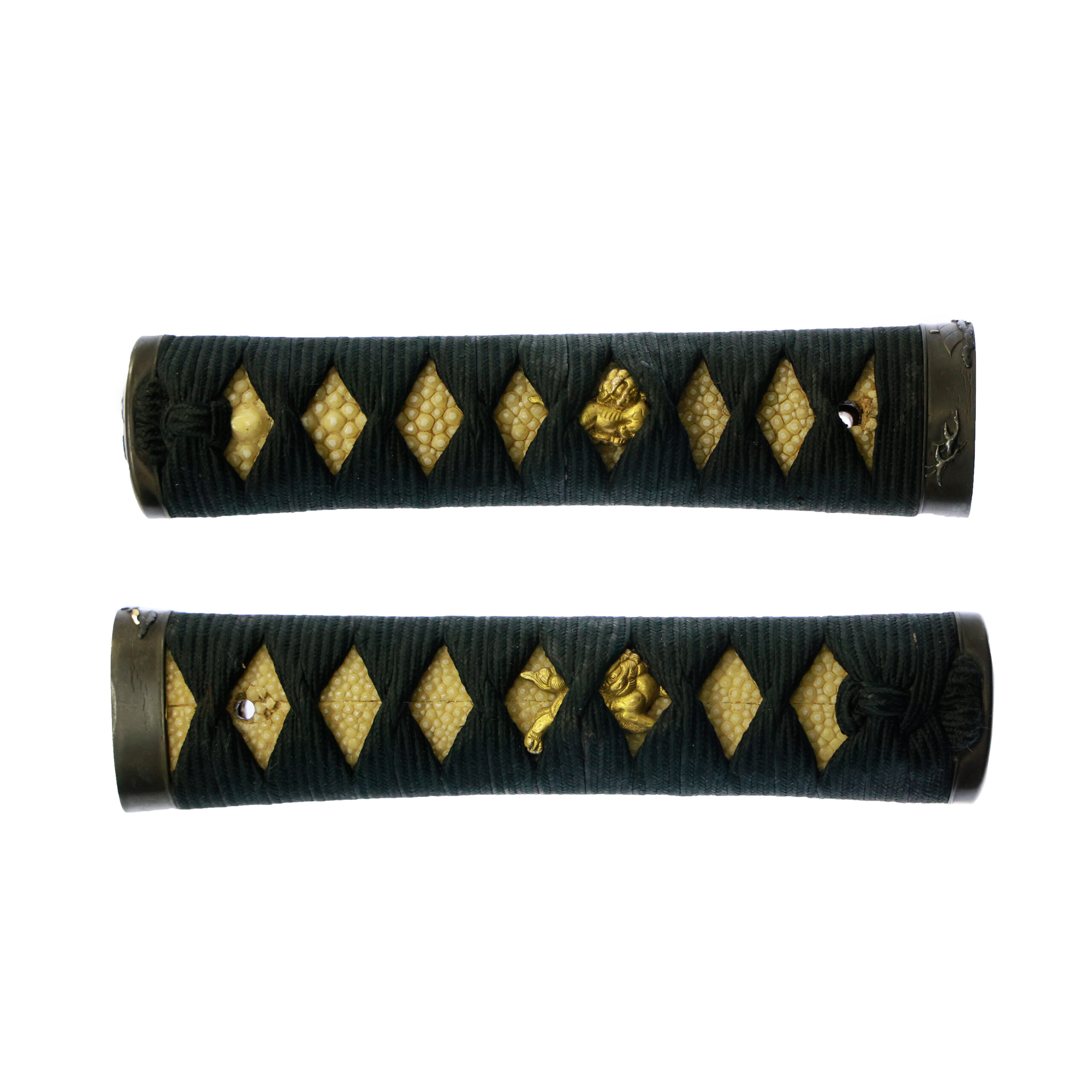
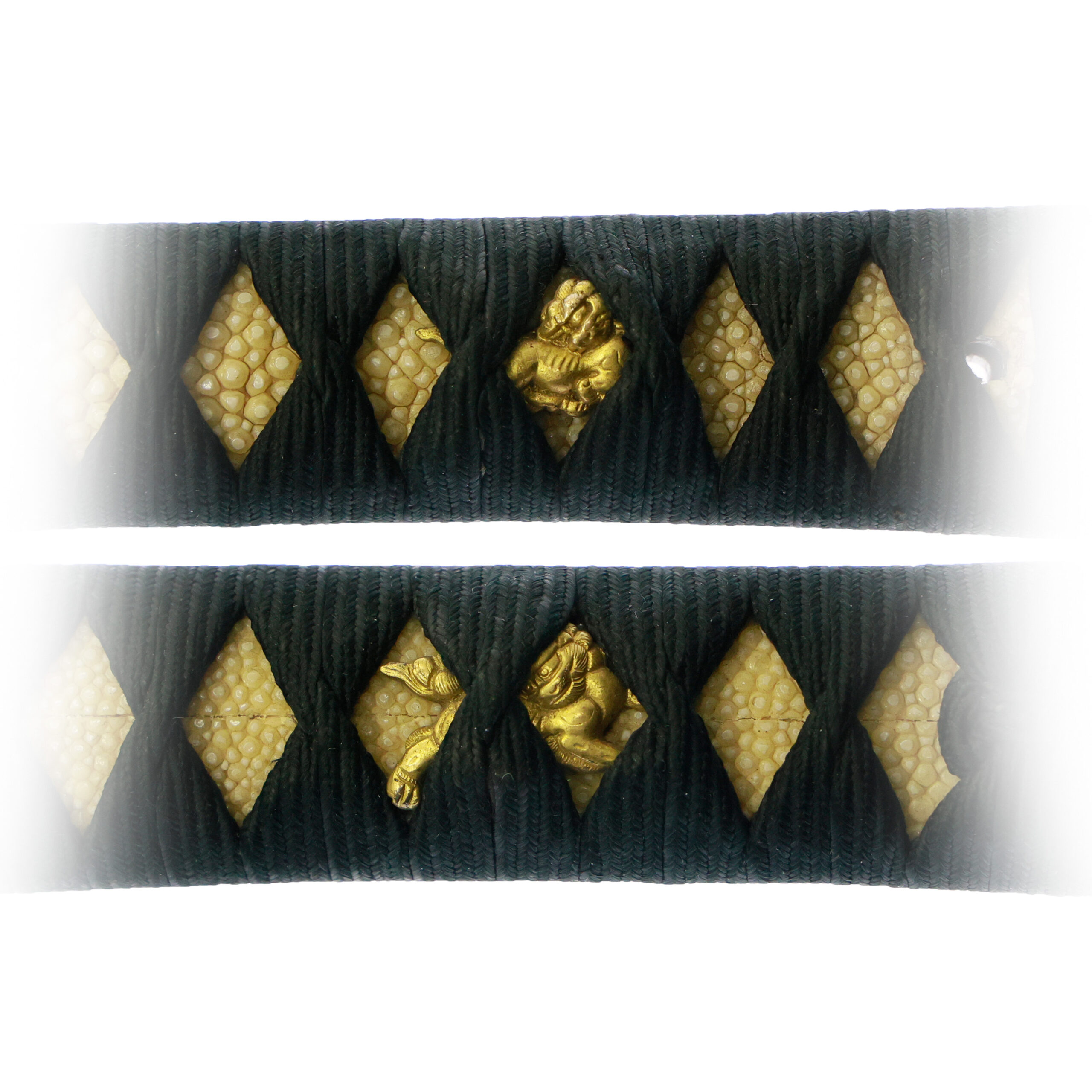
Tsuba and Habaki:Tsuba is the handguard for the Japanese Sword and Habaki is the equipment to make the blade not touch its scabbard inside. It prevents the blade from getting rusty and chipped.
This tsuba features an elegant “ume-karakusa” (梅唐草) design, created using openwork (透かし彫り, sukashi-bori) techniques. The ume (梅, plum blossom) symbolizes resilience, renewal, and good fortune, as it blooms early in spring even through the cold of winter. The karakusa (唐草, arabesque vines) represents longevity and prosperity, with its endlessly intertwining vines.

Kougaai:Kougai is the equipment for Samurai to arrange or fix his hair style.
This Kougai is adorned with the traditional Japanese motif of “deer and maple leaves” (鹿に紅葉, shika ni momiji), a symbolic expression of autumn deeply rooted in Japanese culture. This imagery is commonly seen on the October card in hanafuda (traditional Japanese playing cards) and frequently appears in waka poetry, evoking a sense of quiet solitude, melancholy, and the changing seasons. The deer symbolizes peace and sacredness, while the maple leaves represent the beauty and impermanence of nature. Together, they reflect the uniquely Japanese aesthetic of wabi-sabi, which finds beauty in transience and subtlety.
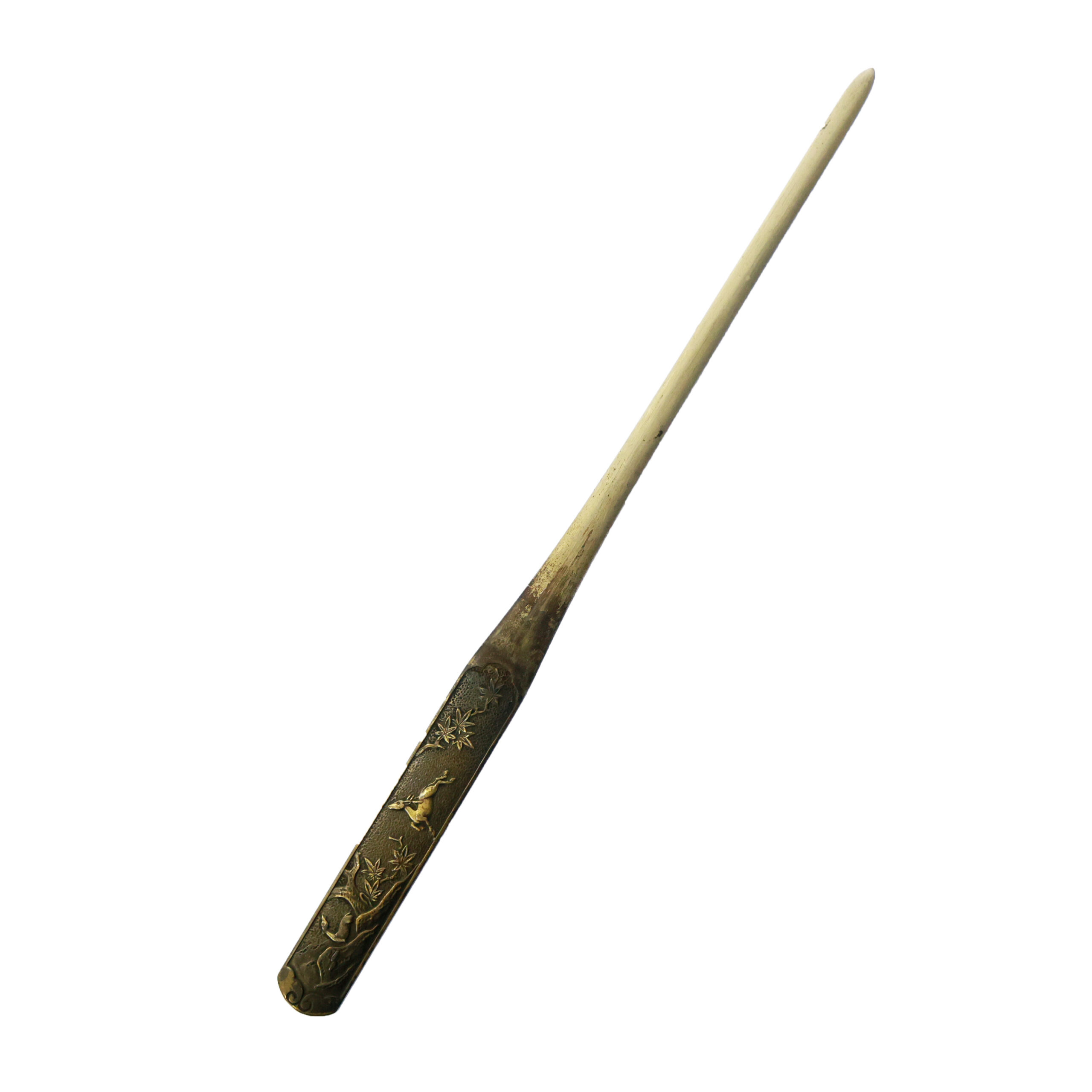
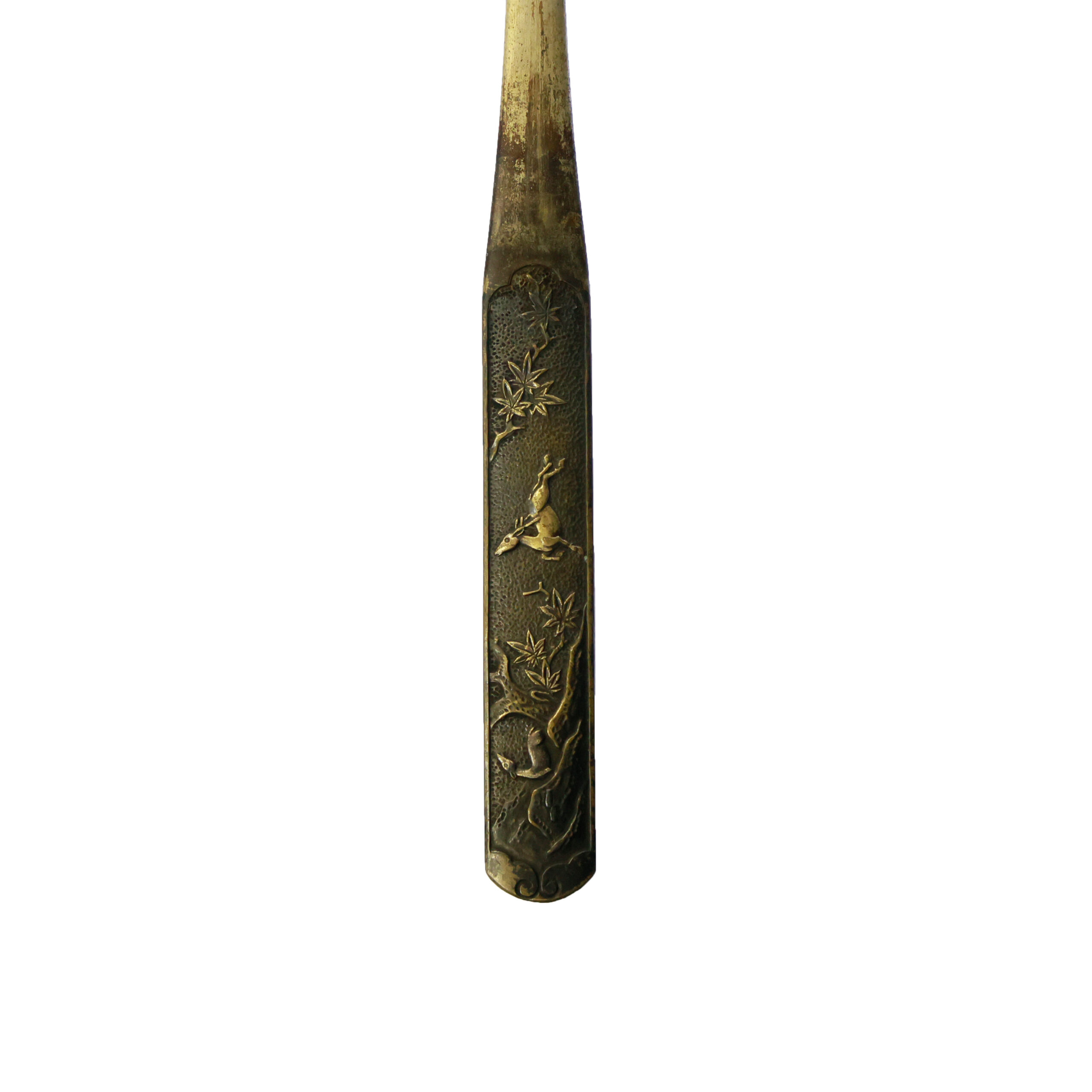
Saya: Saya is the scabbard for the Japanese sword.
This saya (scabbard) features the classic Japanese motif of “plovers over waves” (波に千鳥, nami ni chidori), also seen on the fuchi-kashira. The design, rendered in gold maki-e on black lacquer, symbolizes resilience and harmony—plovers flying above crashing waves represent the strength to overcome adversity and the bonds of family and togetherness.
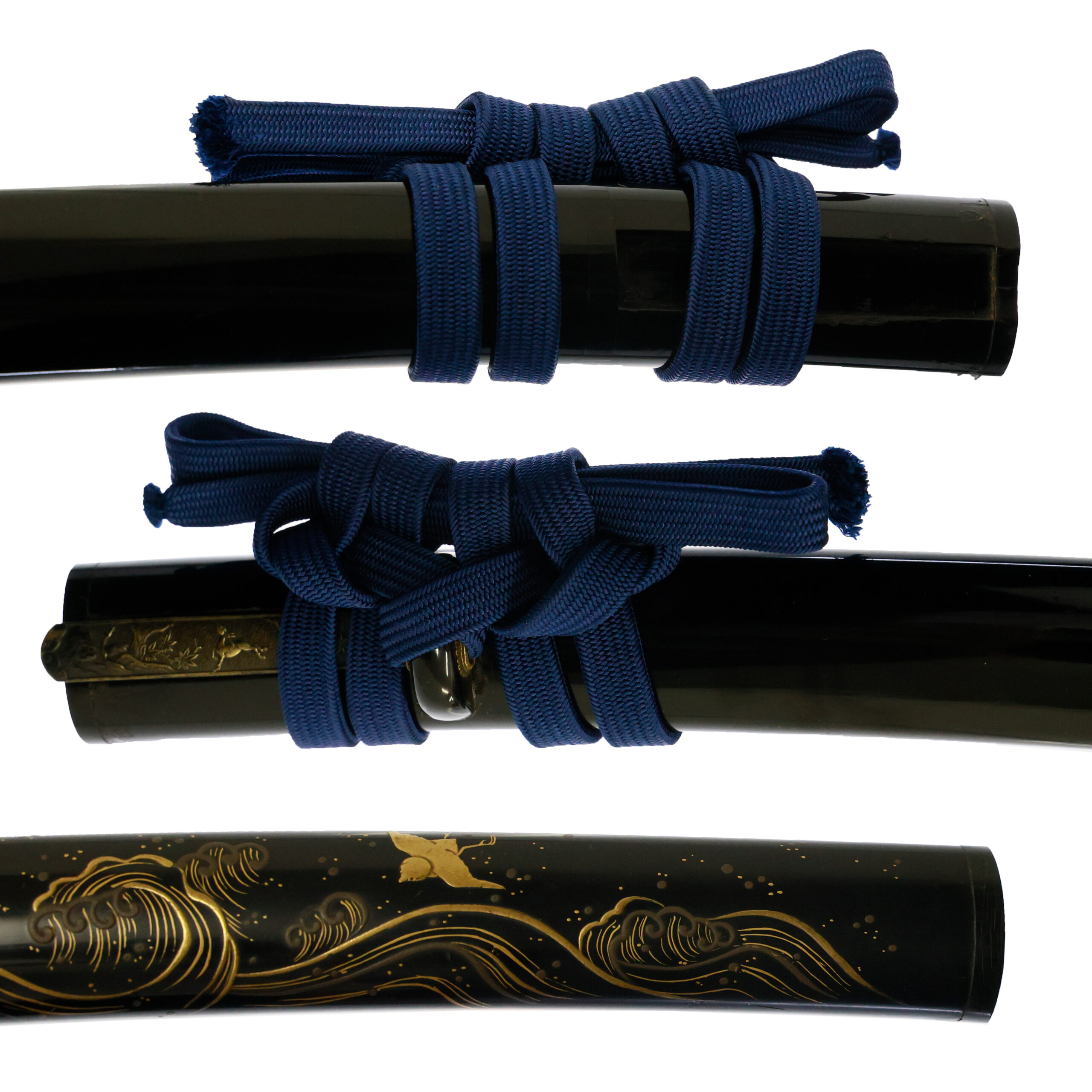
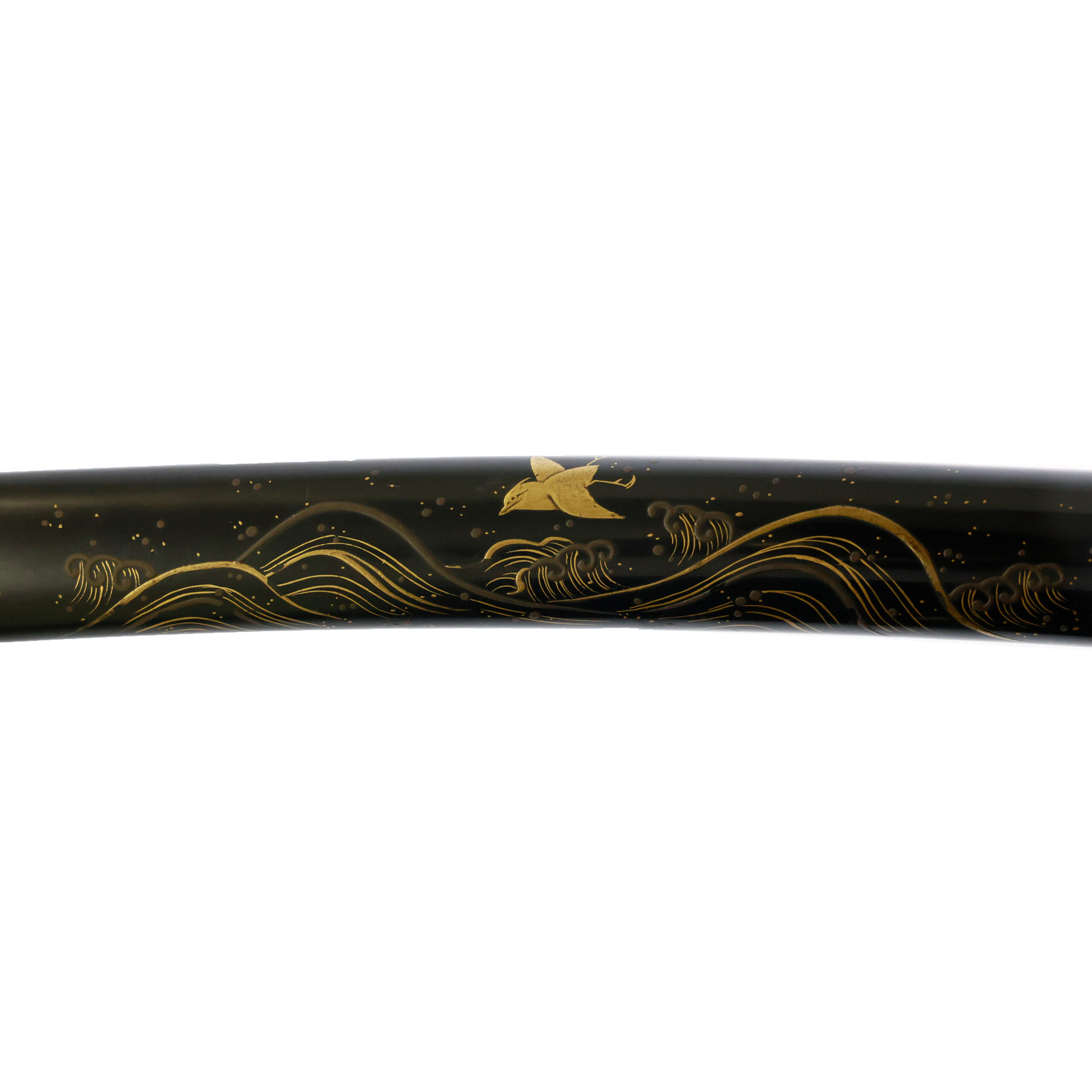

Authentication Paper: NTHK Kanteisho Certificate for the blade (No. 13206)
NTHK, also known as NPO Nihon Touken Hozon Kai, is the oldest organization for sword authentication of Japanese swords in modern times. It was established in 1910 during the post-Samurai era. They authenticated the blade on May 18th in the 7th year of Reiwa (2025). The purchaser will receive these original certificates as well. We can also translate what is written into English and make a PDF file for your record if you request.
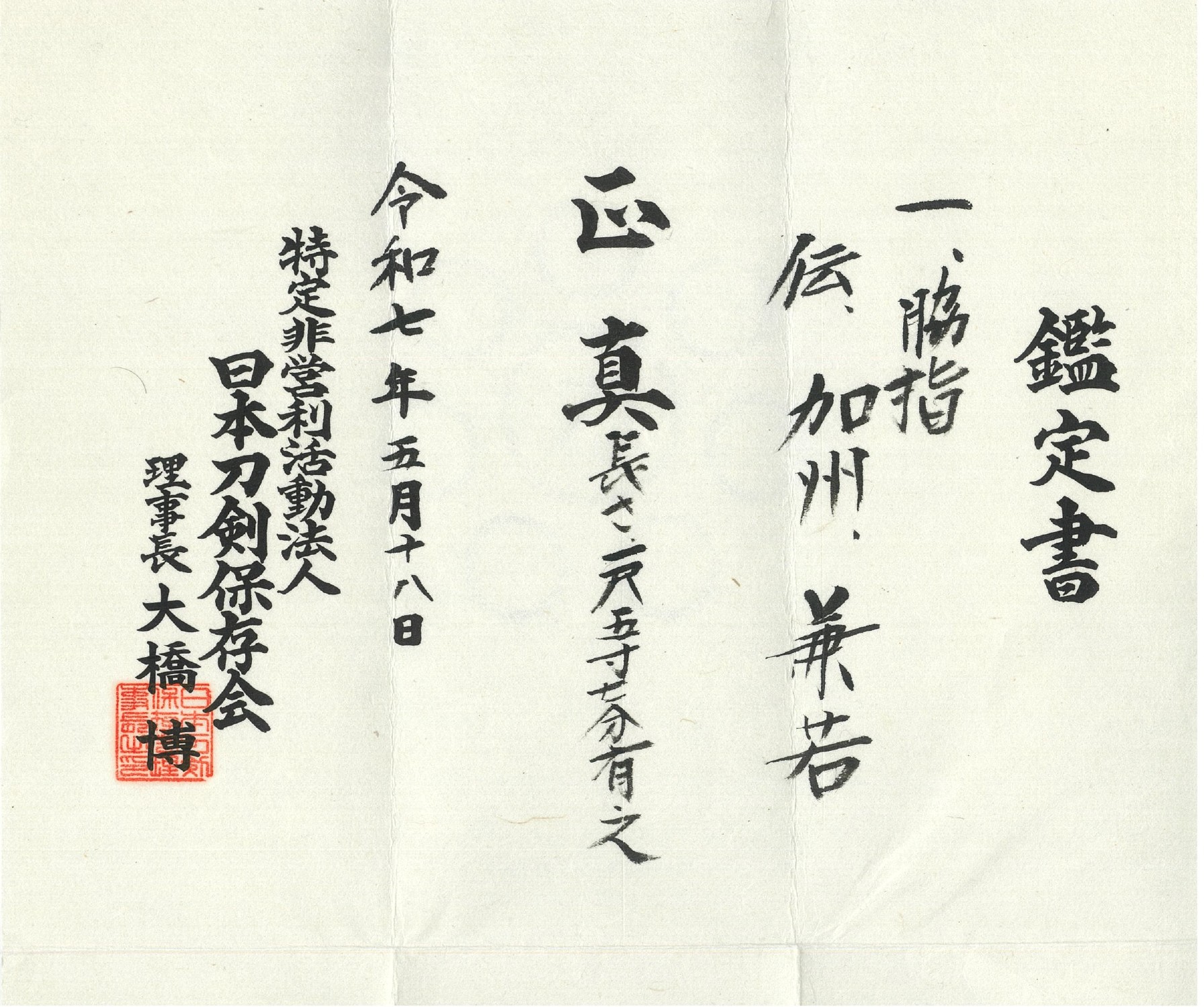
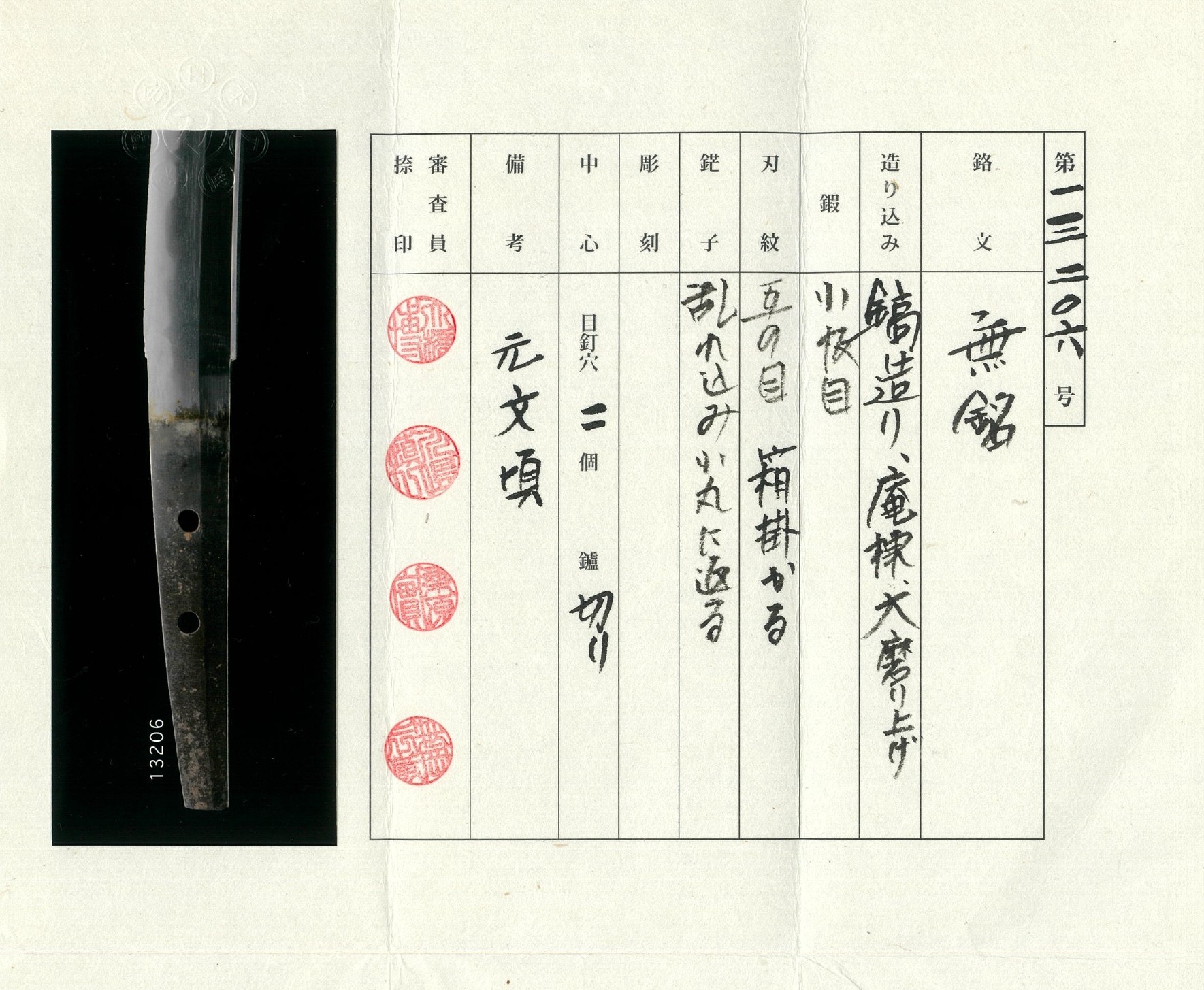
Registration Number: Kanagawa 76646
The Board of Education in Kanagawa prefecture issued a registration paper for this sword. It is called Jyu Hou Touken Rui Torokusho (銃砲刀剣類登録証). Bunkacho (The Agency for Cultural Affairs) acknowledges a Japanese sword with this paper as a work of art.
The sword needs to be traditionally hand-forged and made of Tamahagane carbon steel to be registered in the system. With this paper, its owner in Japan can legally own an authentic Japanese sword. Based on this registration number, we will apply for its export permit.
This paper will need to be returned to the board of education when the sword is being shipped abroad, but you can receive a copy of it. An English translation of this registration paper is available on request.
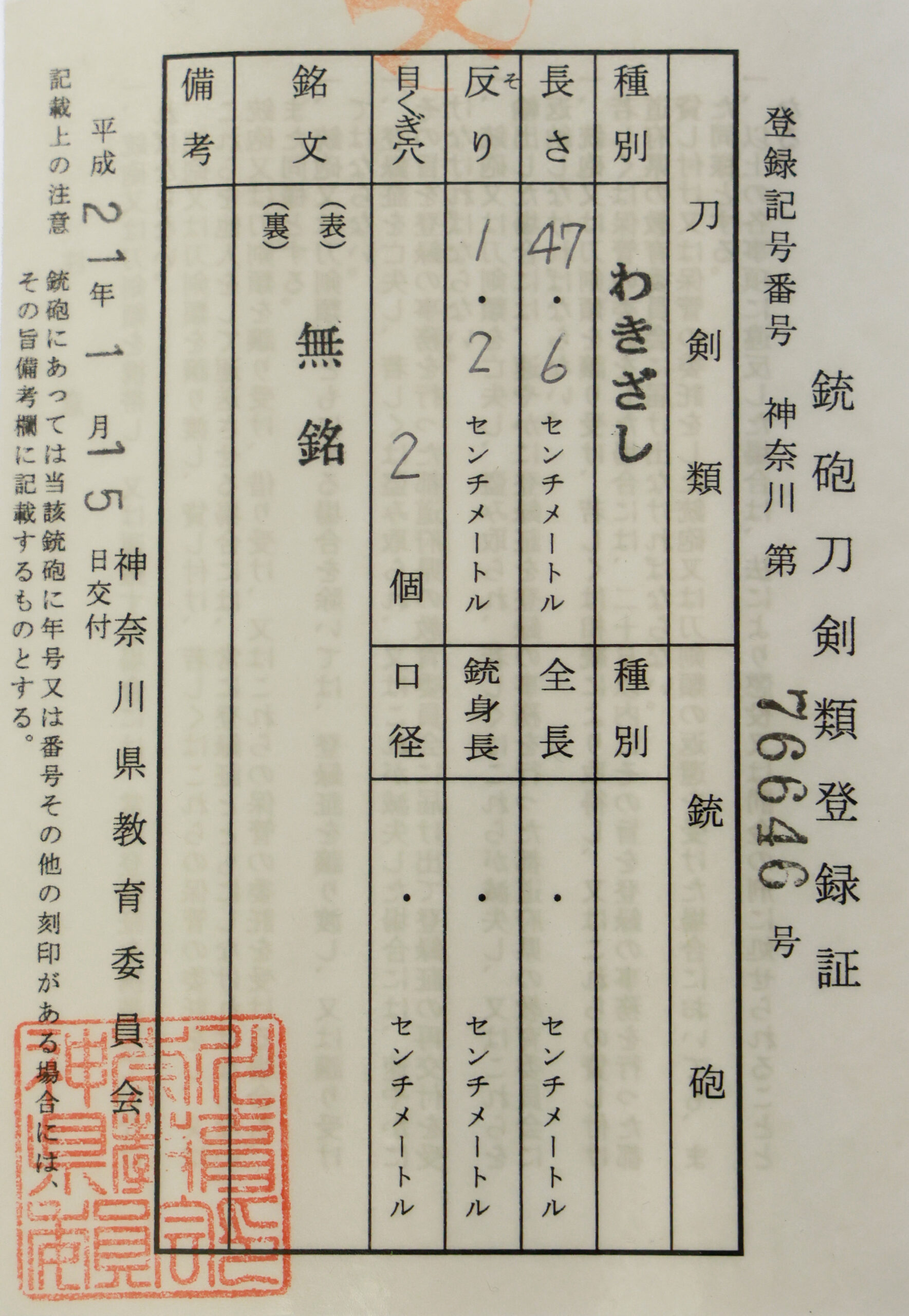
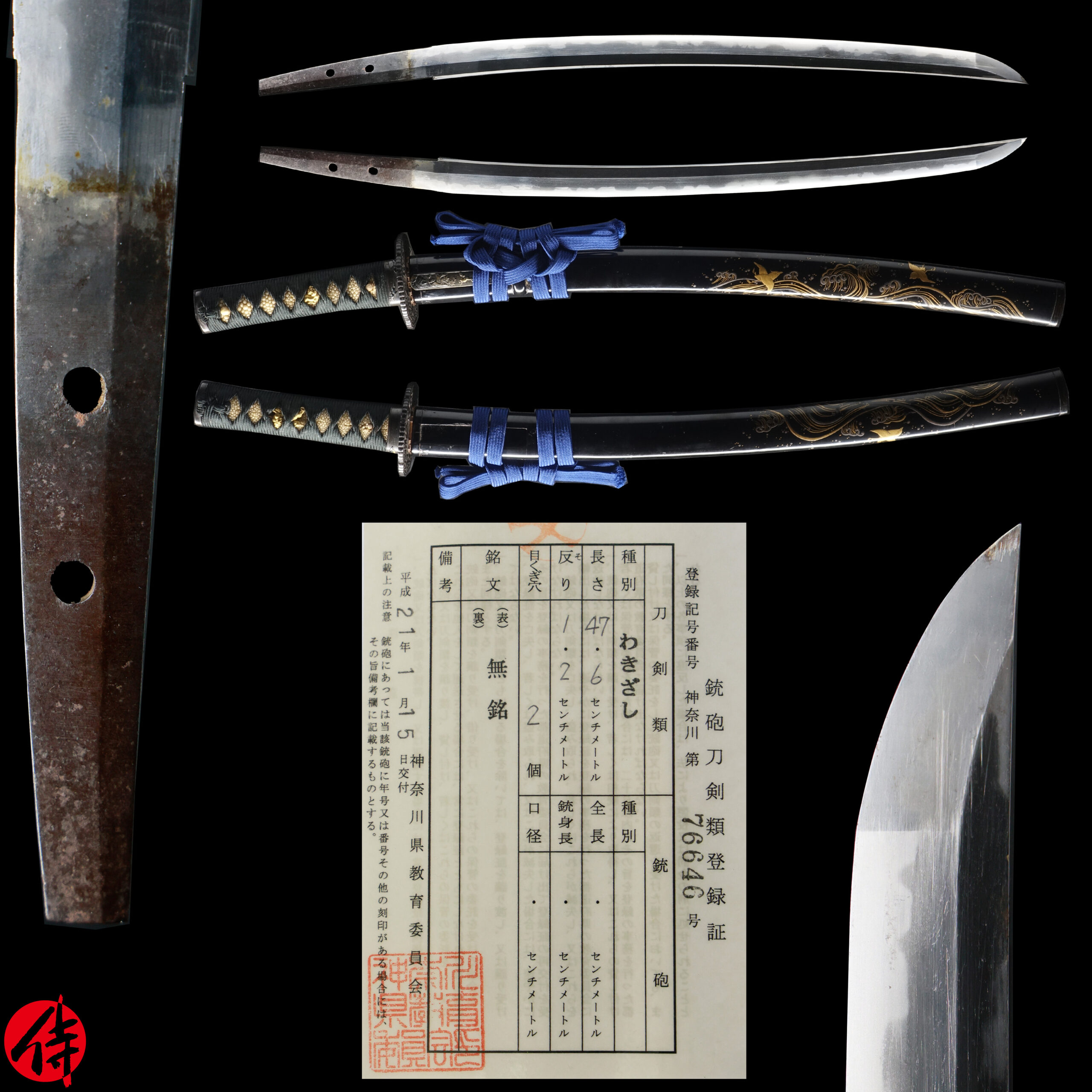
【About us】
Samurai Museum is located in Tokyo, Japan, exhibiting antique artifacts related to the Samurai history. Samurai Museum Shop is the place for those who are interested in Japanese culture and craftsmanship. We deal with antique Samurai swords/armor, traditional crafts made in Japan and so on.
【Japanese Sword& Export Process】
The Japanese swords we deal with are hand-forged edged swords made in Japan. It was made from the traditional carbon steel called TAMAHAGANE (玉鋼). Samurai Museum is familiar with the proper legal procedure for an antique/ authentic Japanese sword to be exported from Japan. We have sent more than 1000 Japanese swords for the past few years (~2025) to amazing owners who appreciate its historical value.
Each Japanese sword is registered under the Agency for Cultural Affairs and the Board of Education in Japan. They issue a registration paper for each Japanese sword for its owner in Japan to legally possess it. The Japanese sword with its registration paper means it was traditionally hand-forged in Japan.
To legally export the sword from Japan to other countries, we will have to apply for its permit to the Agency for Cultural Affairs(Bunkacho) and return the original registration paper to the Board of Education. It normally takes around 2-4 weeks to receive this permit after submitting required documents. And we would like you to expect at least 1-1.5 months for your order to arrive at your given address after you ordered. For more detailed info, please click here.
It is allowed for residents in Japan to own authentic Japanese swords without a special license as long as they come with registration papers. Please feel free to contact us if you are a resident of Japan, whether temporarily or permanently. We will also assist you when you leave Japan and need to obtain the export permit.
【Payment Method】
We accept payment through Stripe (Credit card), PayPal, Apple Pay or ChromePay, all of which are secure payment methods. Also, you don’t need to make an account on Stripe for the checkout. If you prefer other payment method, please contact us. After confirming your payment, we will apply for an export permit. You may either pay in JPY, USD, AUD, CAD, EUR, CHF or GBP. The price is set in Japanese Yen. Prices in other currencies are automatically calculated based on the latest exchange rate.

* If the amount is above 1 million JPY, Stripe or wire transfer will be the only options for payment.
【Shipping】
We have shipped authentic Japanese swords to the USA, Canada, Mexico, Germany, France, UK, Hong Kong and Australia. If you don’t live in these countries and like to order, please contact us first before making a purchase. We offer Free International Shipping as long as we can send antique Japanese swords by EMS.
We normally ship by EMS (Express Mail Service) provided by Japan Post. We will send you a tracking number for your order as soon as we hand it to the post office. We will put 100 % insurance on the shipping document without any extra charge. Based on the total amount, there might be a duty tax or other fee for you to pay, depending on the countries. We use package cushioning to protect the item and put it in a PVC pipe, which is one of the most secure packages because of its durability.
It will normally takes 5-14 days for the item to arrive at your given address after we dispatch it. Time of delivery is estimated as accurately as possible by the carrier but does not take into account any delays beyond our control such as by inclement weather, post office holiday seasons.
*If you live in Australia and like to purchase an authentic Japanese sword, please click here to know the detail.

【Review】
Here is one of the reviews we received from a customer who purchased an authentic Japanese sword from us. For more reviews, please click here.
“My experience overall with the whole process was wonderful. I had many questions about the history and process to purchase these treasures. All my questions were answered very timely and complete. The staff is very knowledgeable and very well versed if any questions do arise.”
【How to make sure the condition】
Please keep in mind that what you are going to purchase is an antique item. We uploaded high resolution photos for you to check its condition thoroughly. If you like to see more photos with different angles, please feel free to contact us. We will be happy to send them to you so that you can make informed decision. It is essential for us to know that you are happy with your choice of a sword. and we are prepared to use the best of our ability to serve you.
【How To Contact Us】
Please contact us through email, Facebook Messenger or Live Chat if you have any questions. You can find each icon on the right side of the website. Please click one of them to reach us. We will reply to you within 1-2 business days.
【The Art of Nihonto (Japanese Sword)】
Samurai’s history is a profound, eloquent legacy of ancient Japanese warriors in which millions of people worldwide are being fascinated. If you like to find out the art of Nihonto, please click here.
【A Guide to Japanese Sword Maintenance】
After acquiring an genuine Japanese sword, it is also important to know how to take good care of it. Here is the special video for you. Mr. Paul Martin, Japanese sword expert, shows you how to give proper maintenance to your sword. By mastering how to clean the Japanese sword, its aesthetic beauty will last forever.
When you purchase a Japanese sword from us, you can get a Free Japanese sword maintenance kit. It comes with four tools (Choji Oil, Uchiko Whetstone Powder, Peg remover, Oil Applicator). By watching the video instruction above , you can enjoy learning how to maintain your Japanese sword while appreciating it. If you have any difficulty assembling the sword or cleaning the blade, you can feel free to contact us.
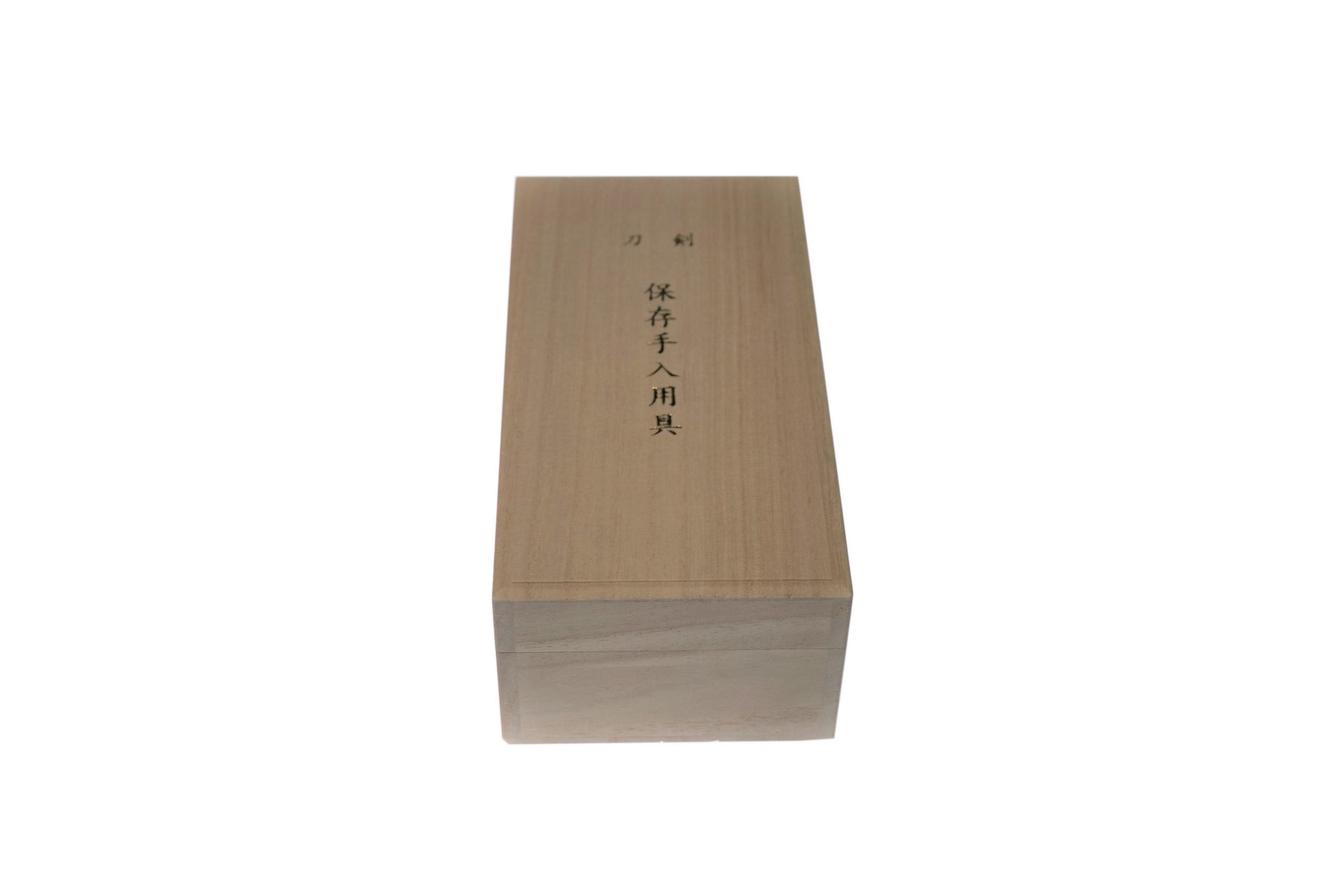
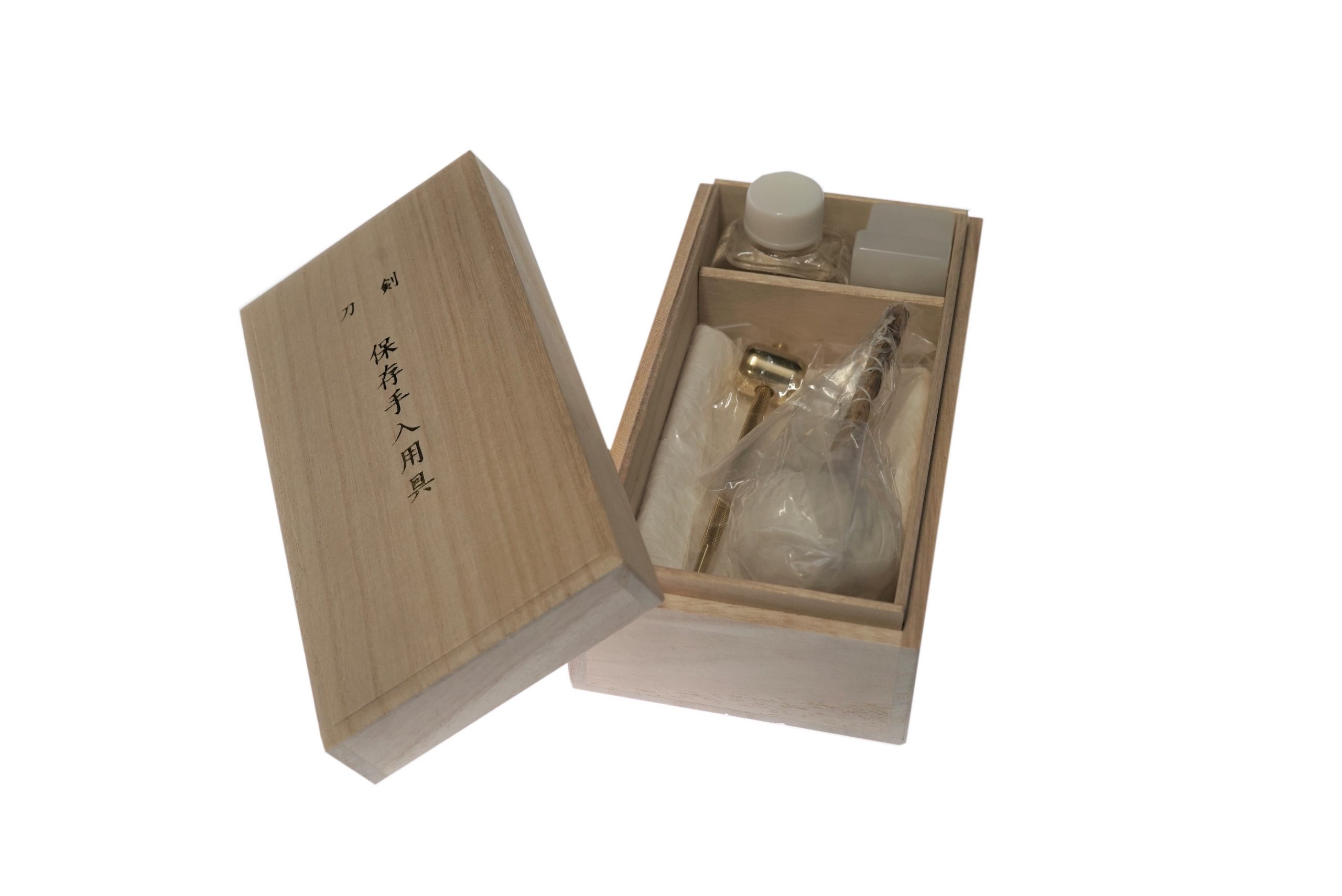
MORE ANTIQUE JAPANESE SWORD FOR SALE
SWORDS WITHOUT CERTIFICATES FOR SALE
LEARN JAPANESE SWORD TERMINOLOGY
Thank you for reading all the information on the page. If you have any difficulty choosing the right Japanese sword for you, we will be more than happy to help you find the one that speaks to you the most. Please feel free to contact us.


